The document discusses client-server communication design principles, particularly in iOS, while emphasizing the need for efficient data fetching and offline capabilities. It outlines user management, network state handling, and a structured approach to data storage and retrieval through objects and managers. The document also highlights the importance of using modern networking practices, session management techniques, and upgrade strategies within applications.
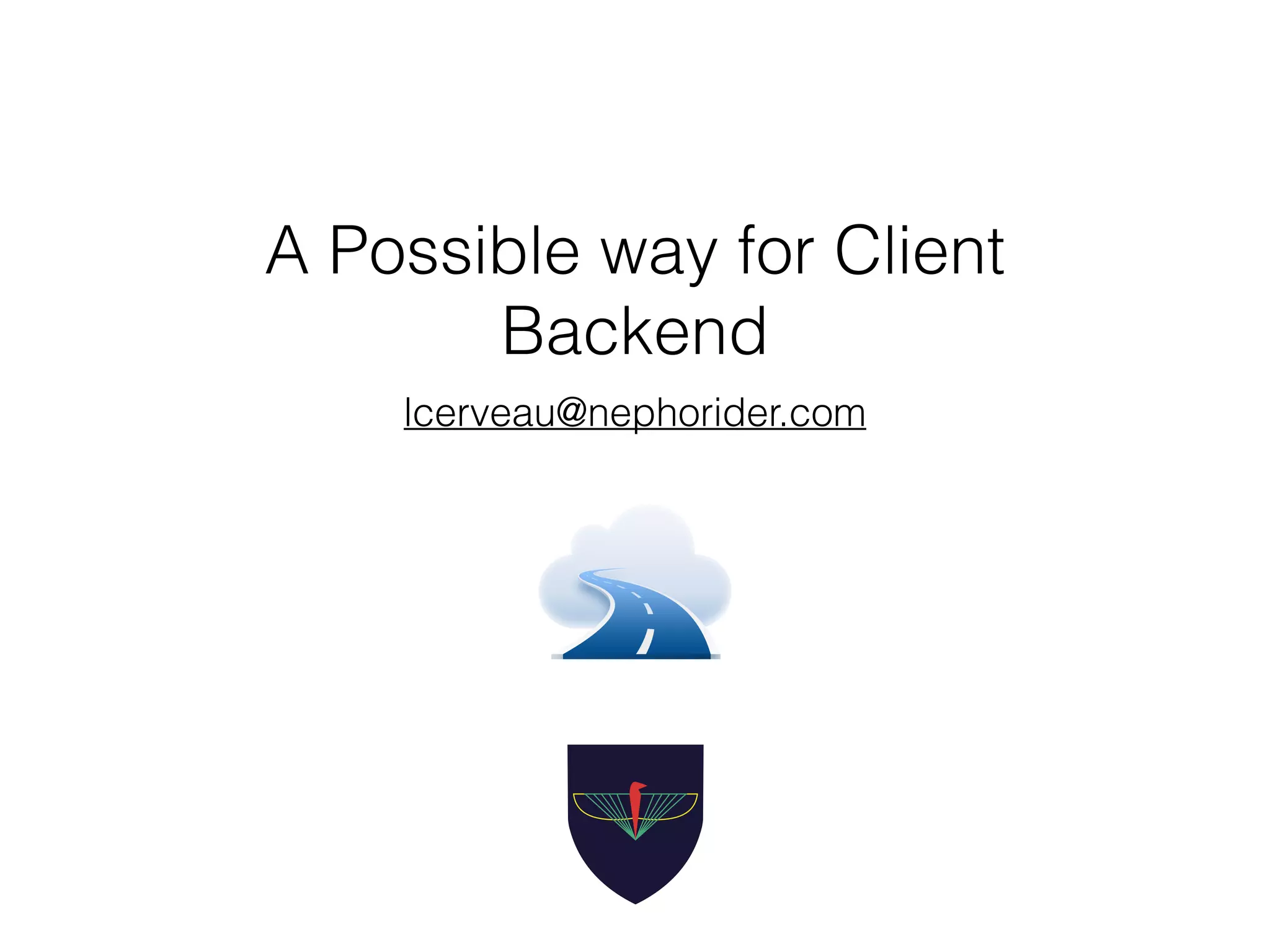

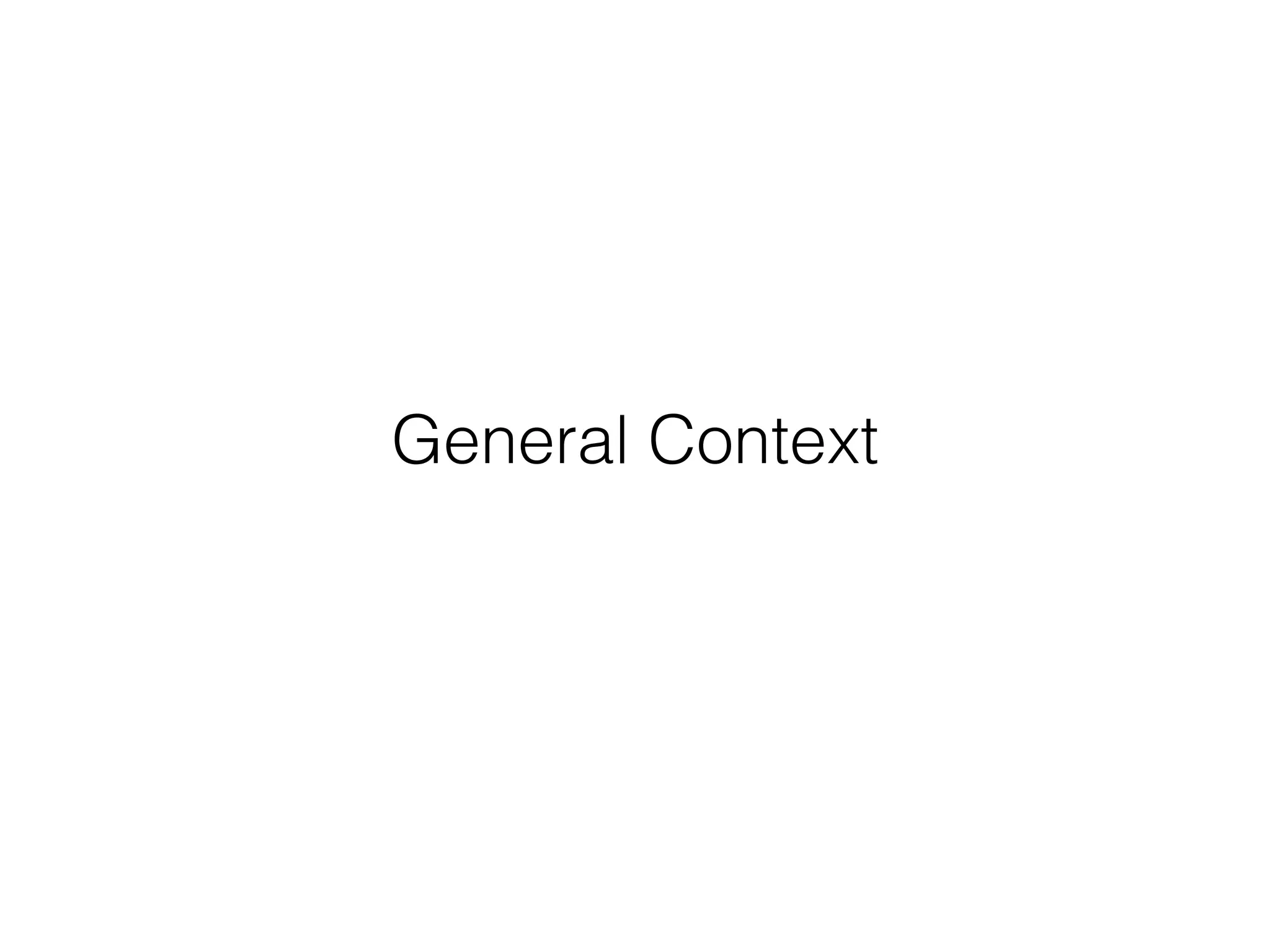
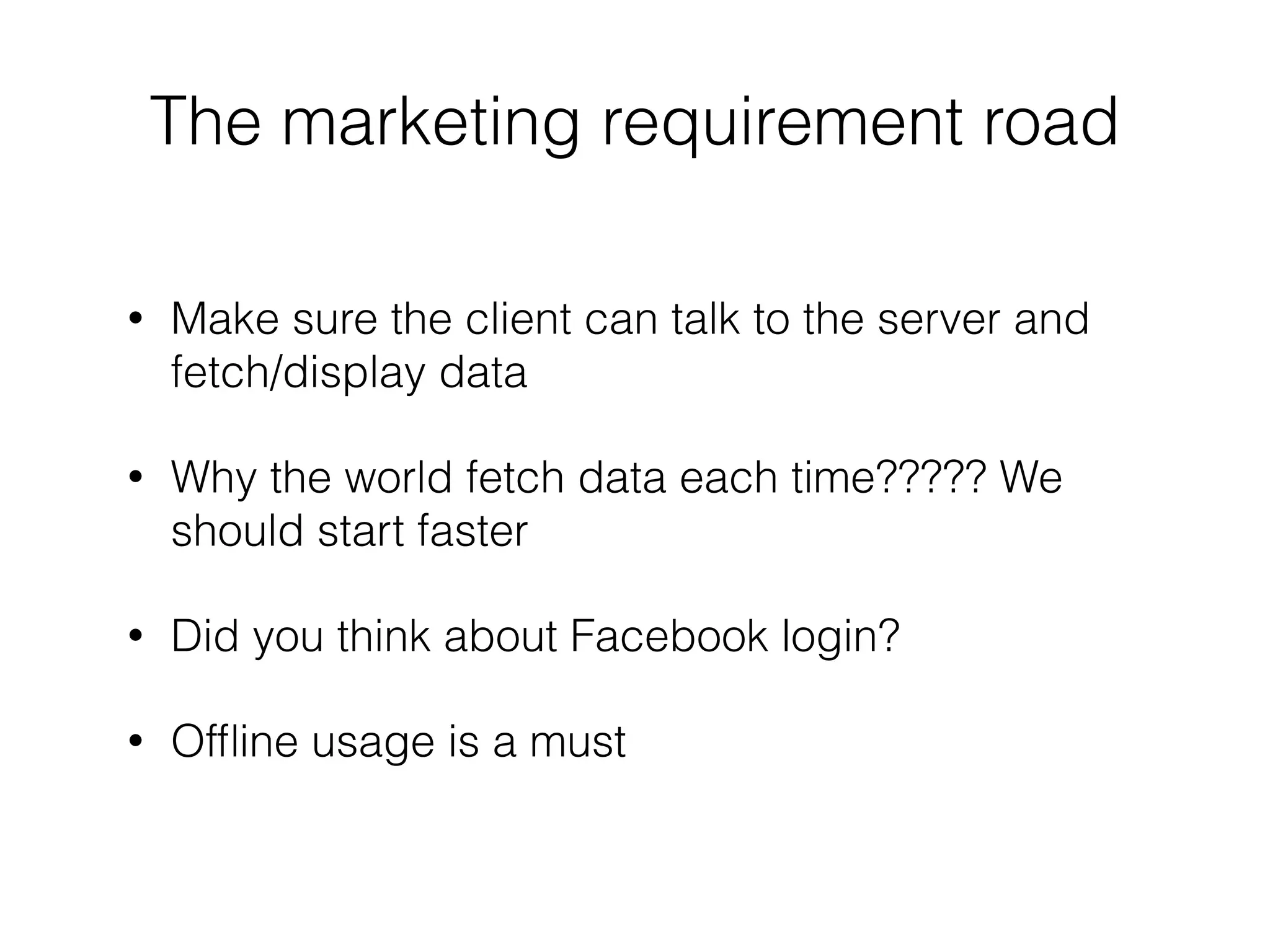
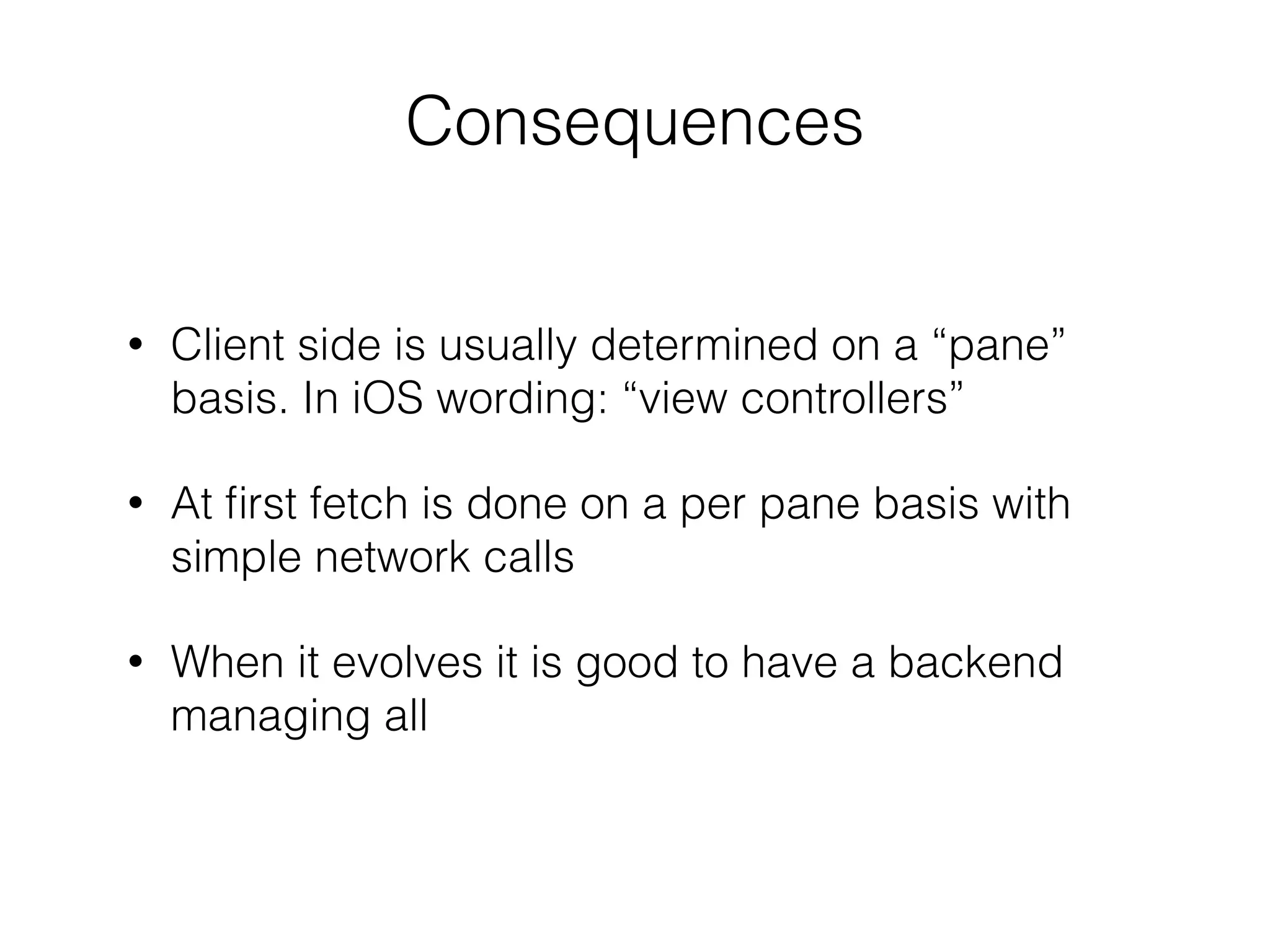
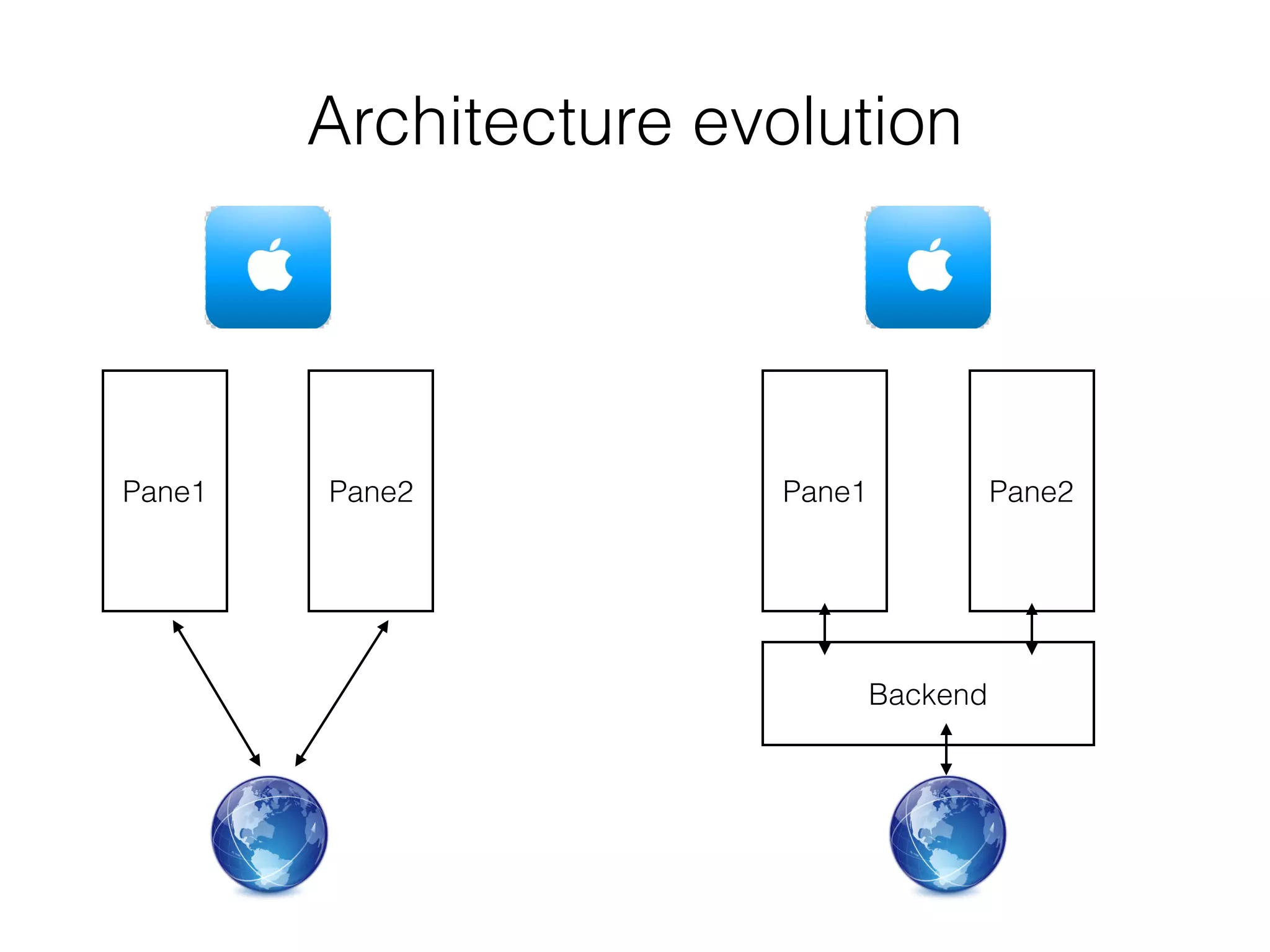
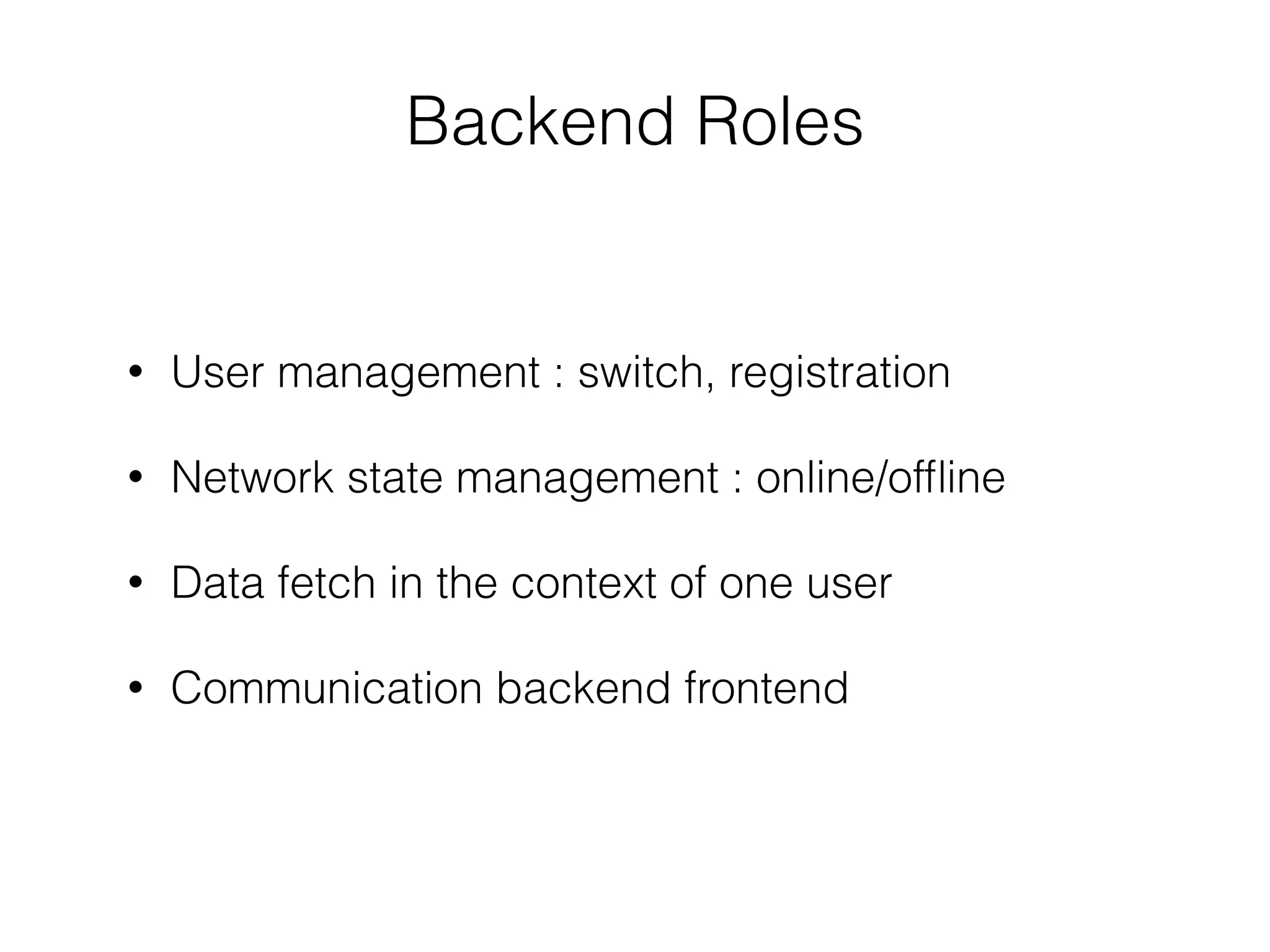
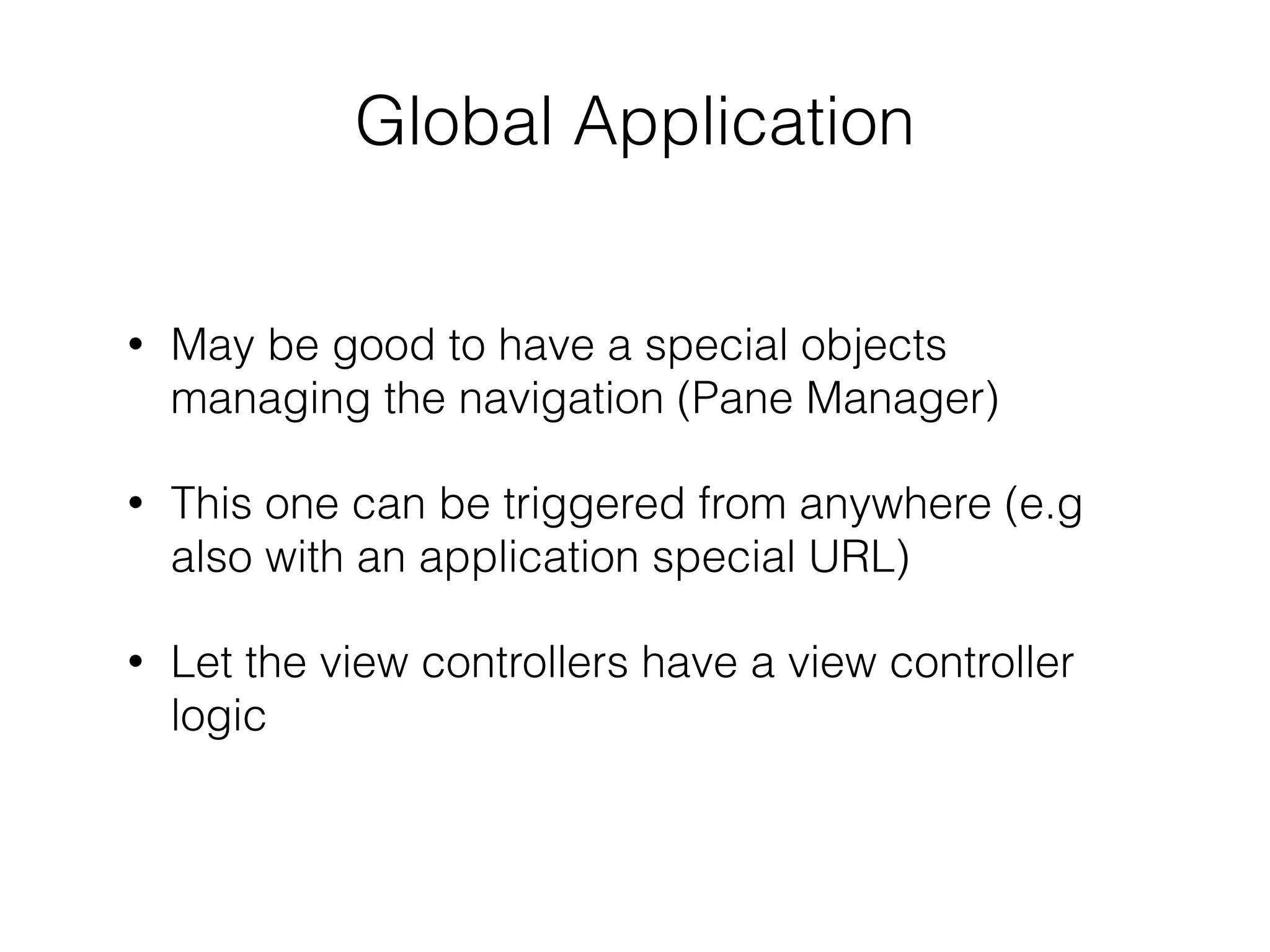
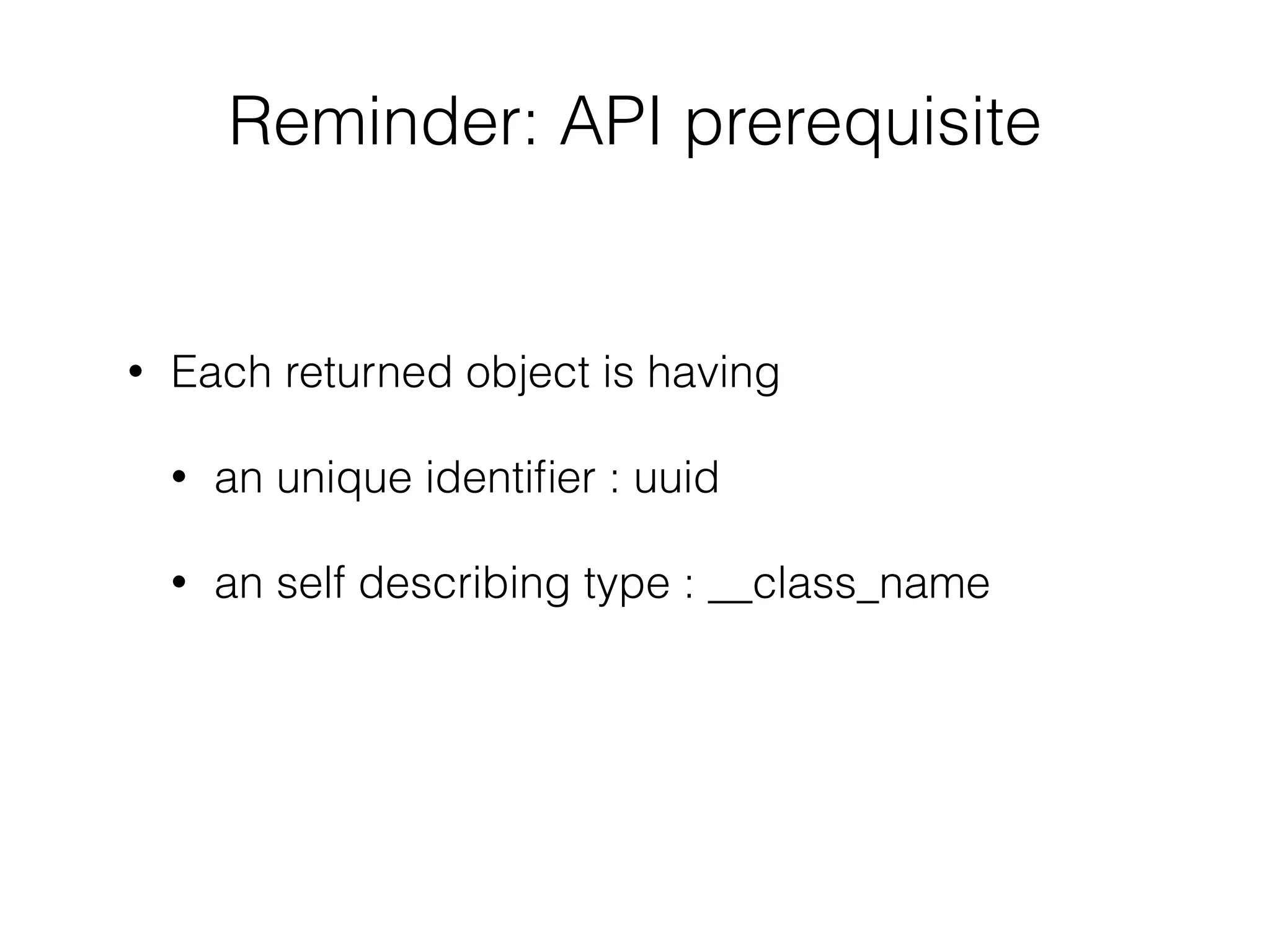
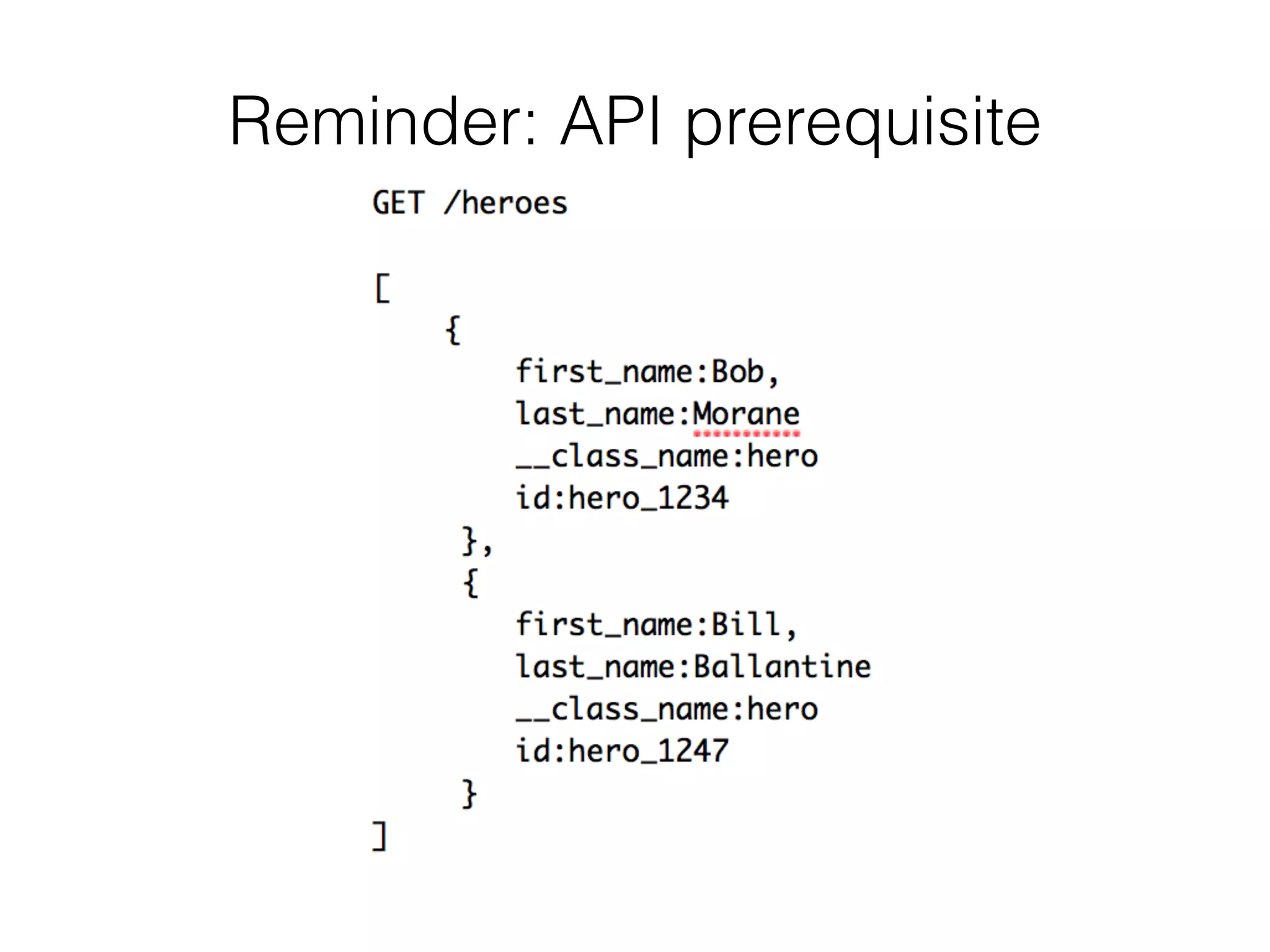
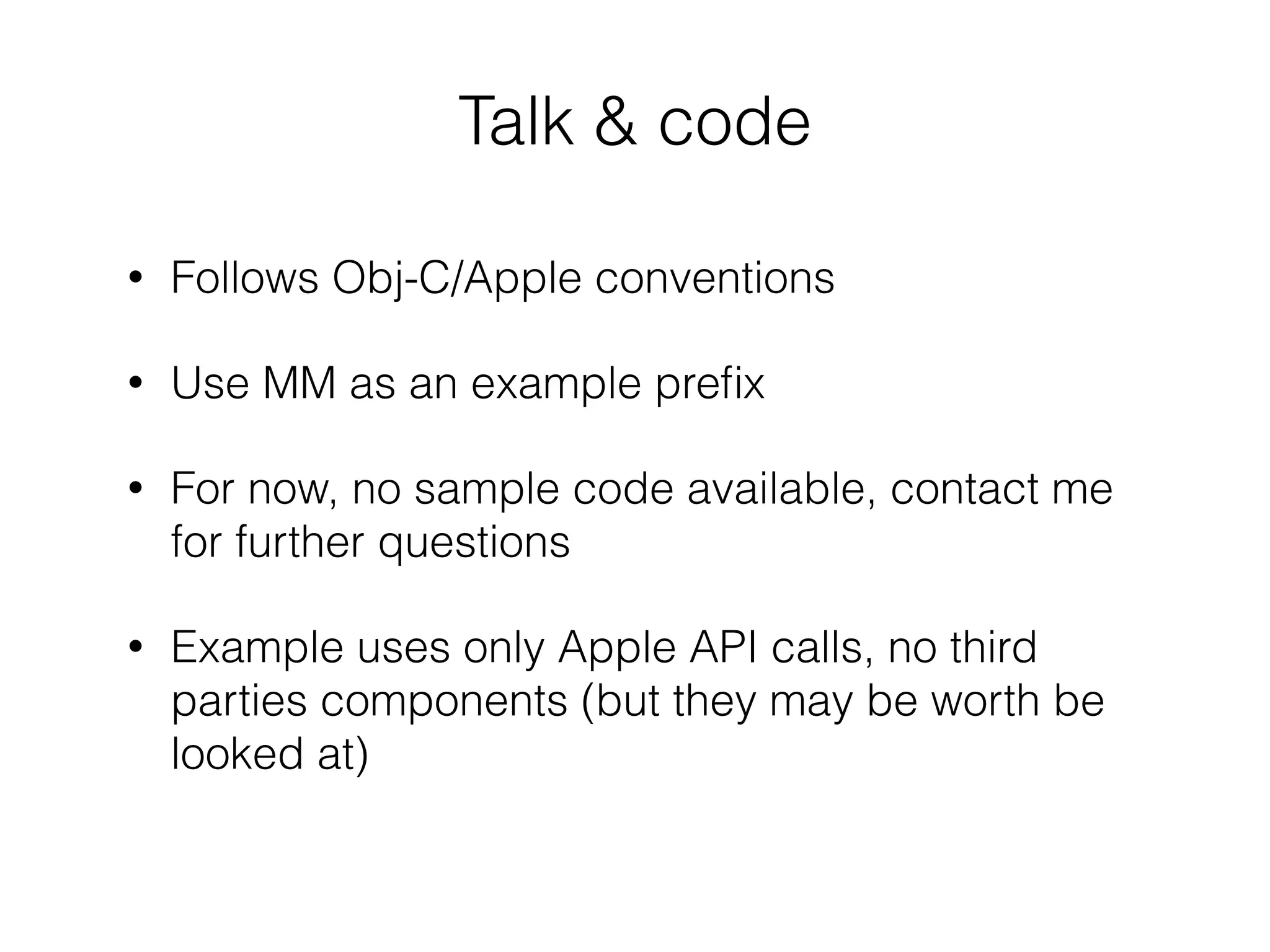
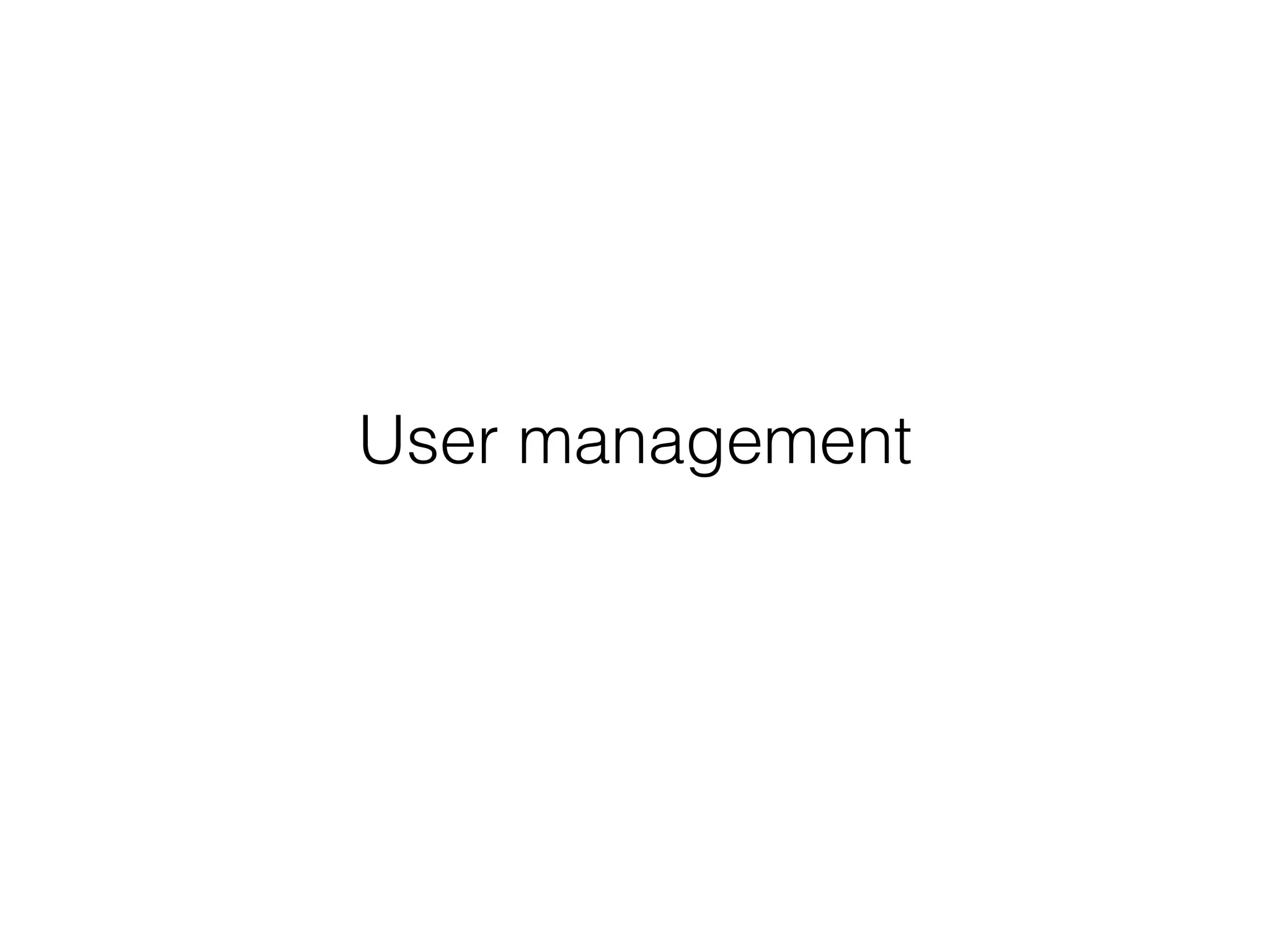
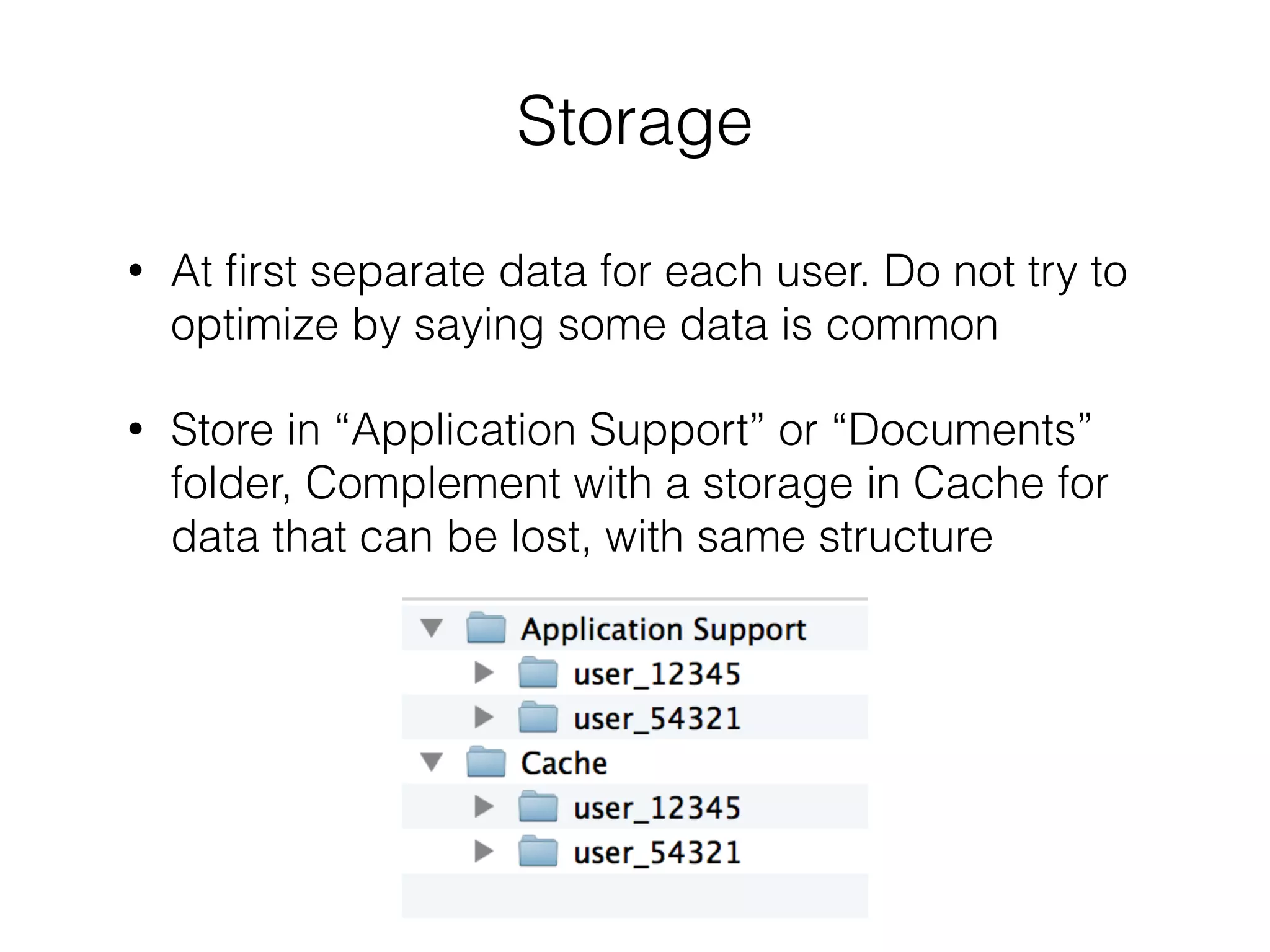
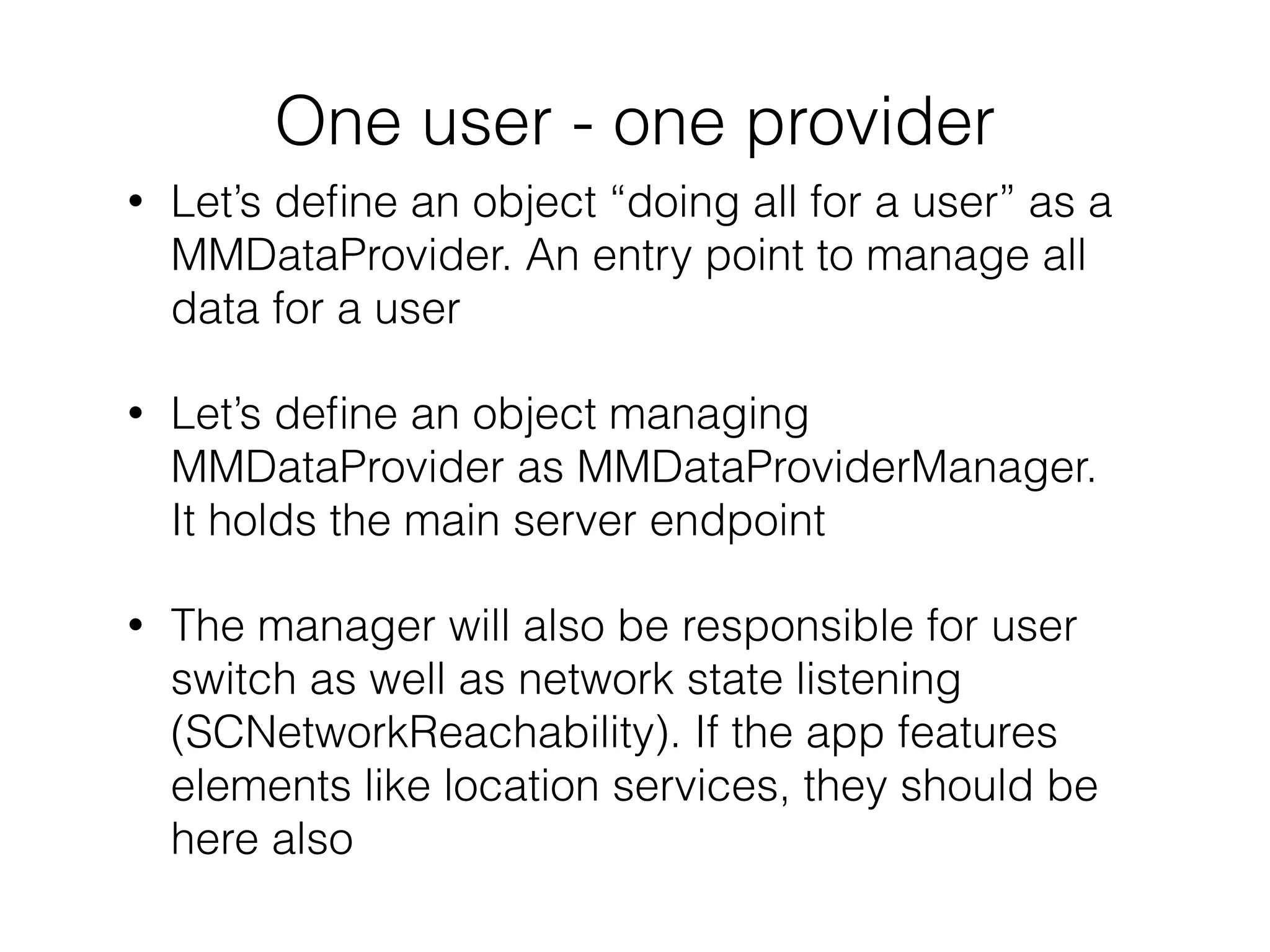
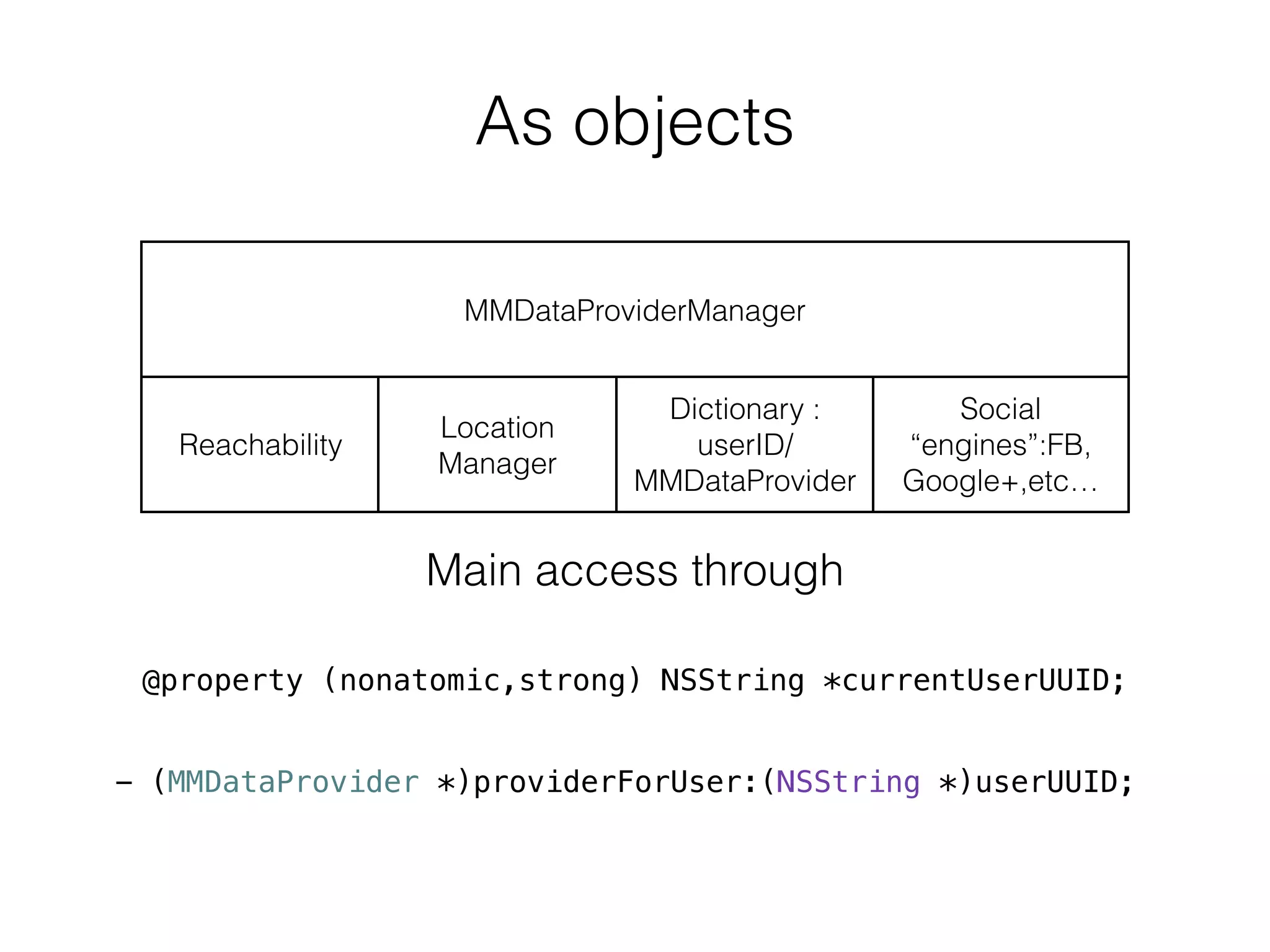
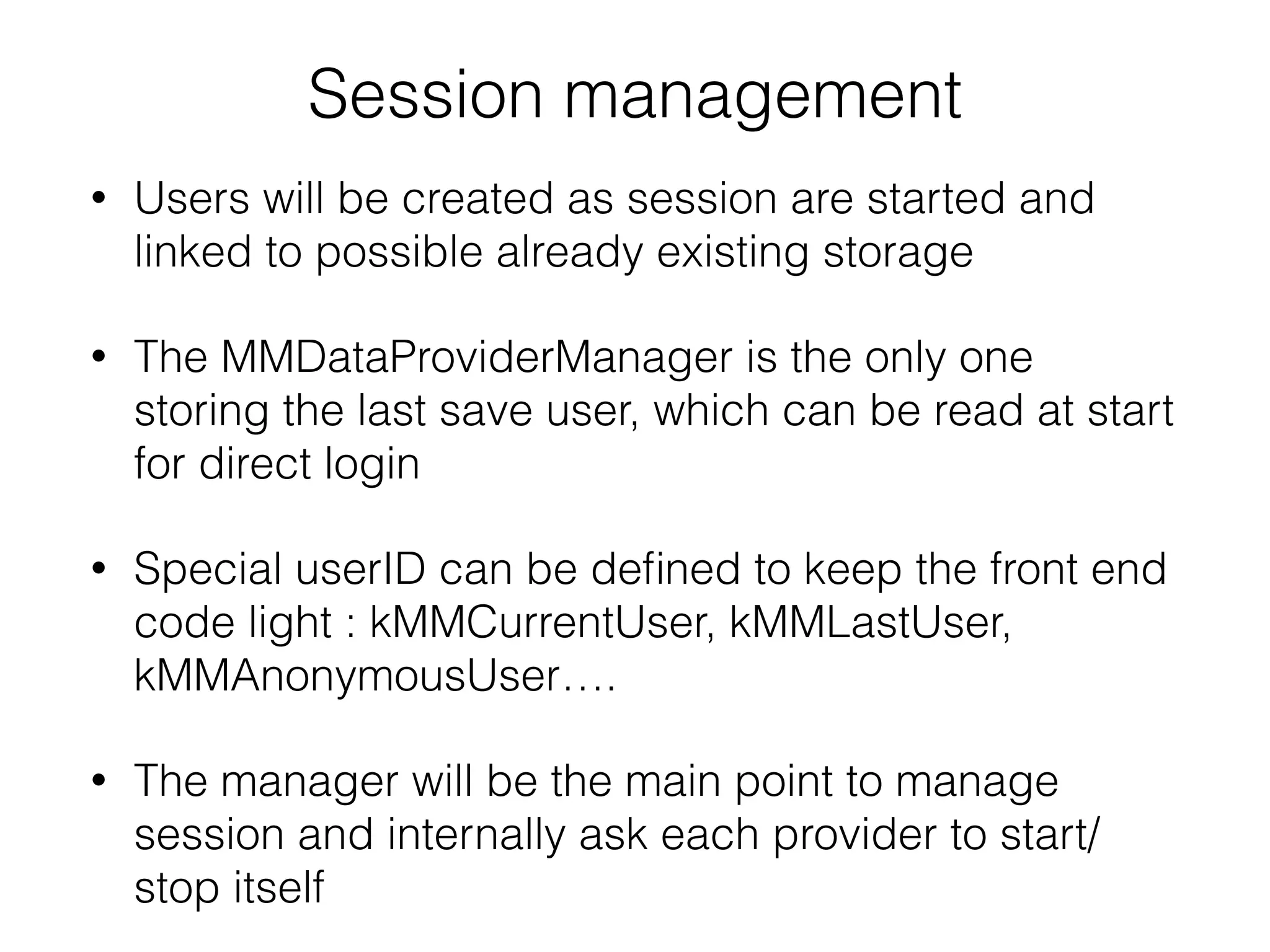
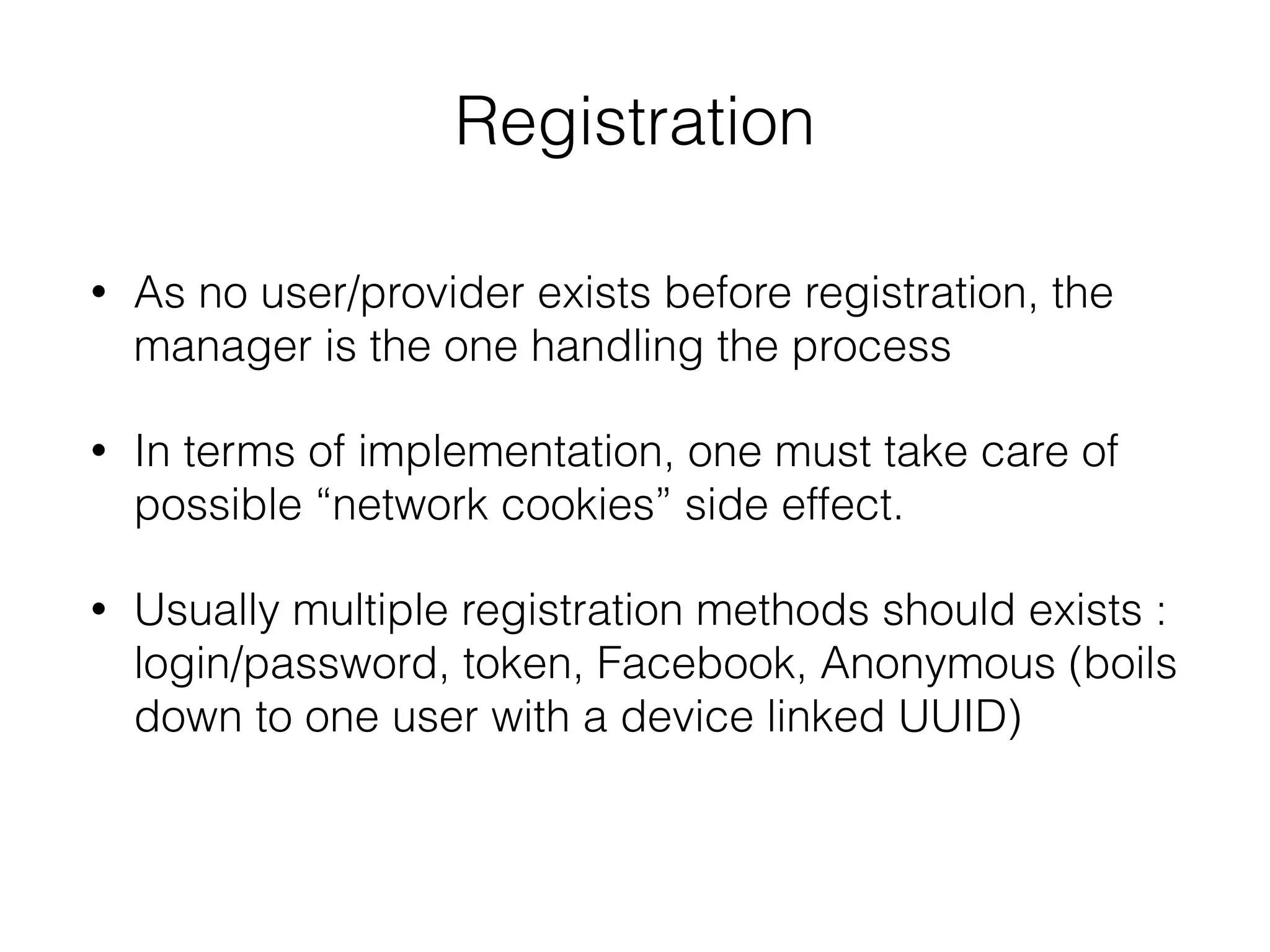
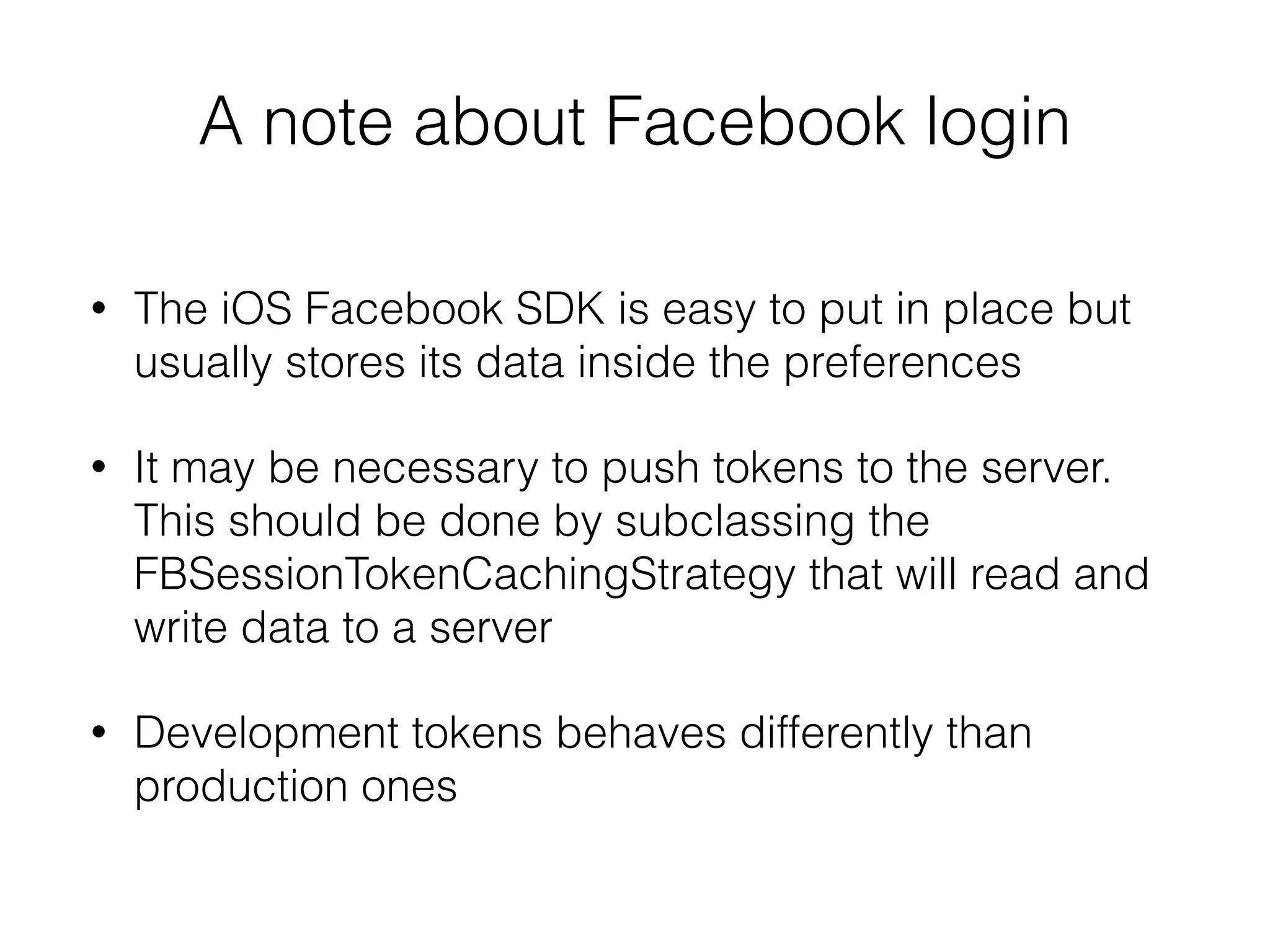


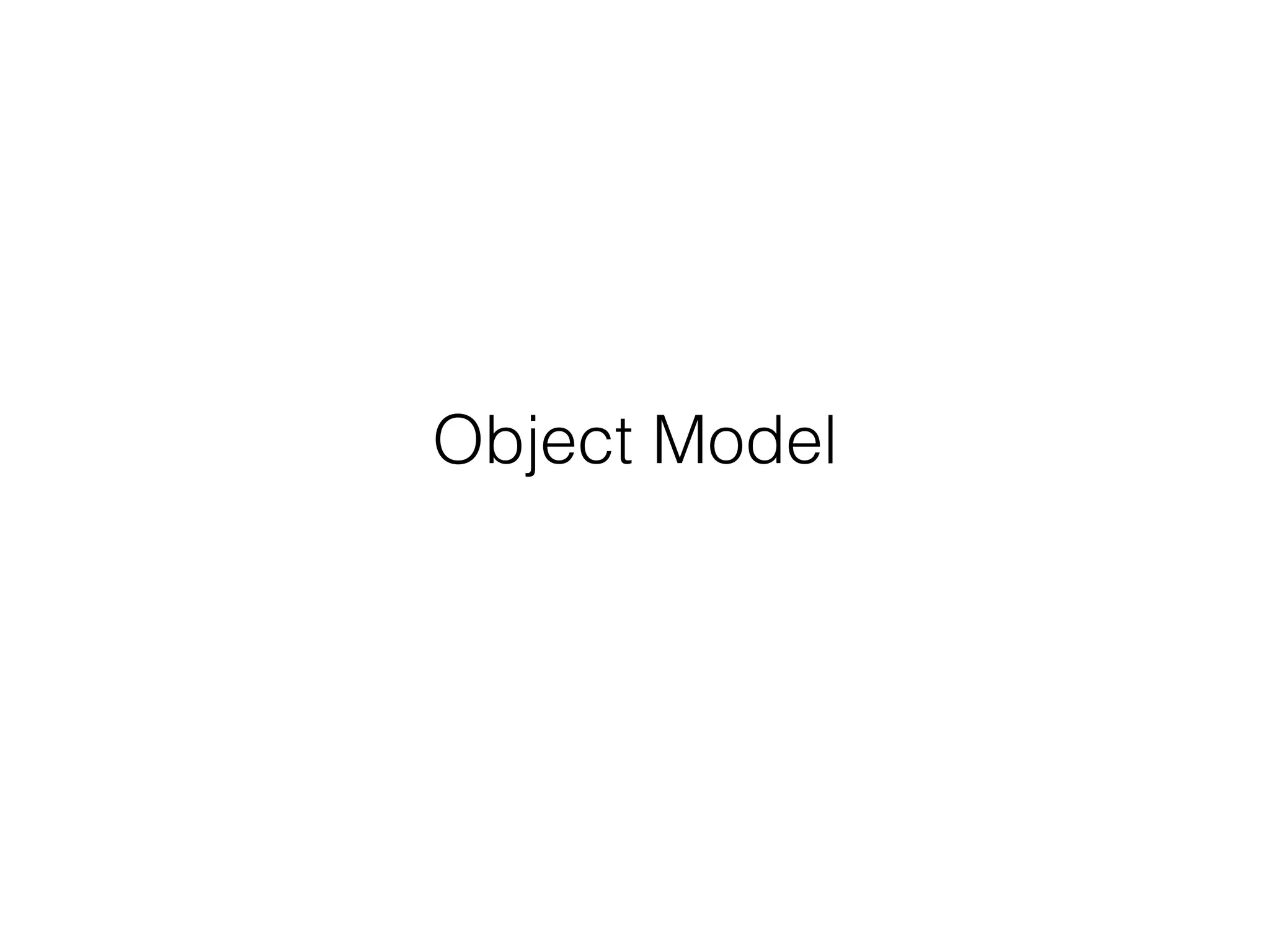
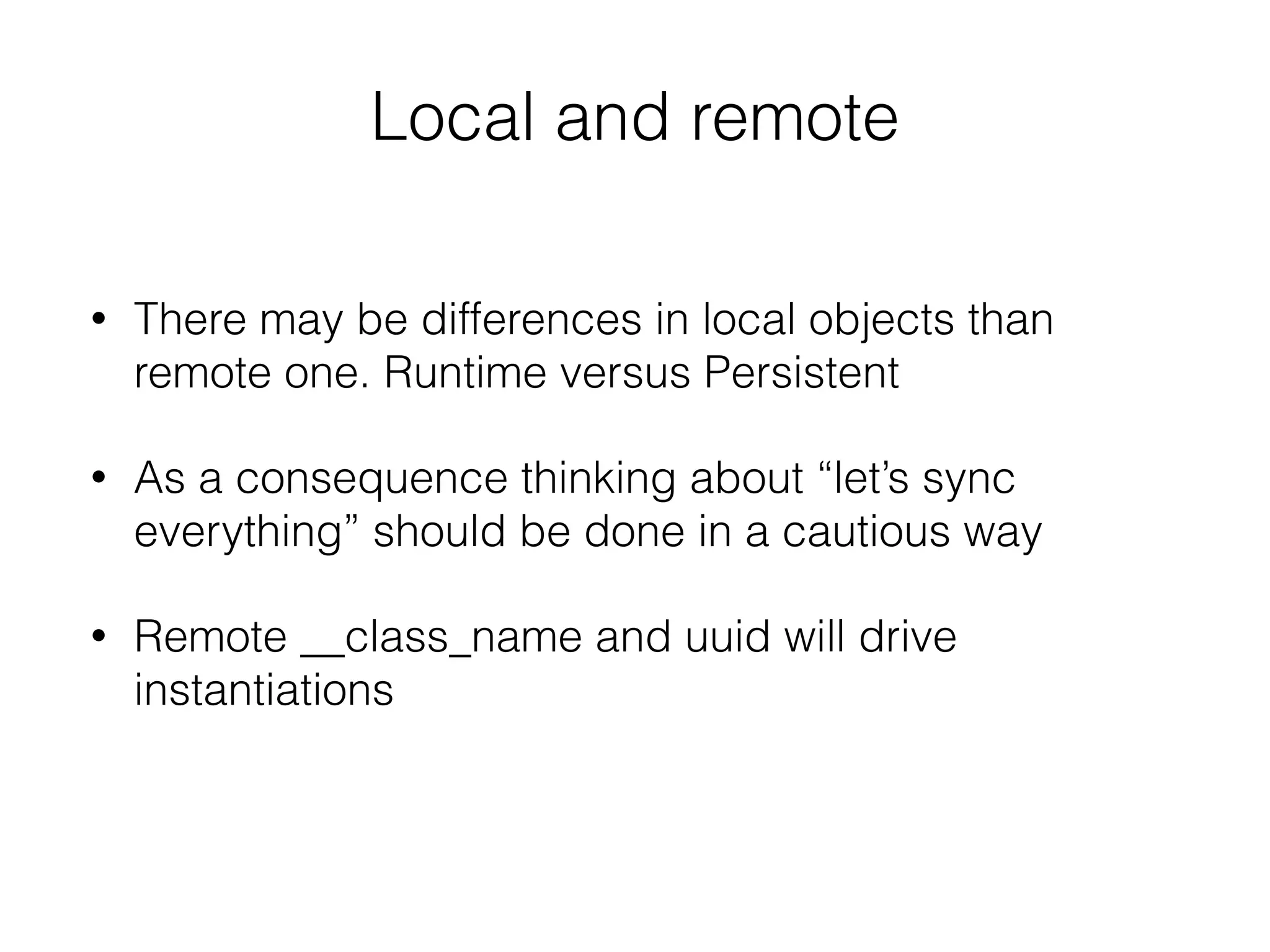
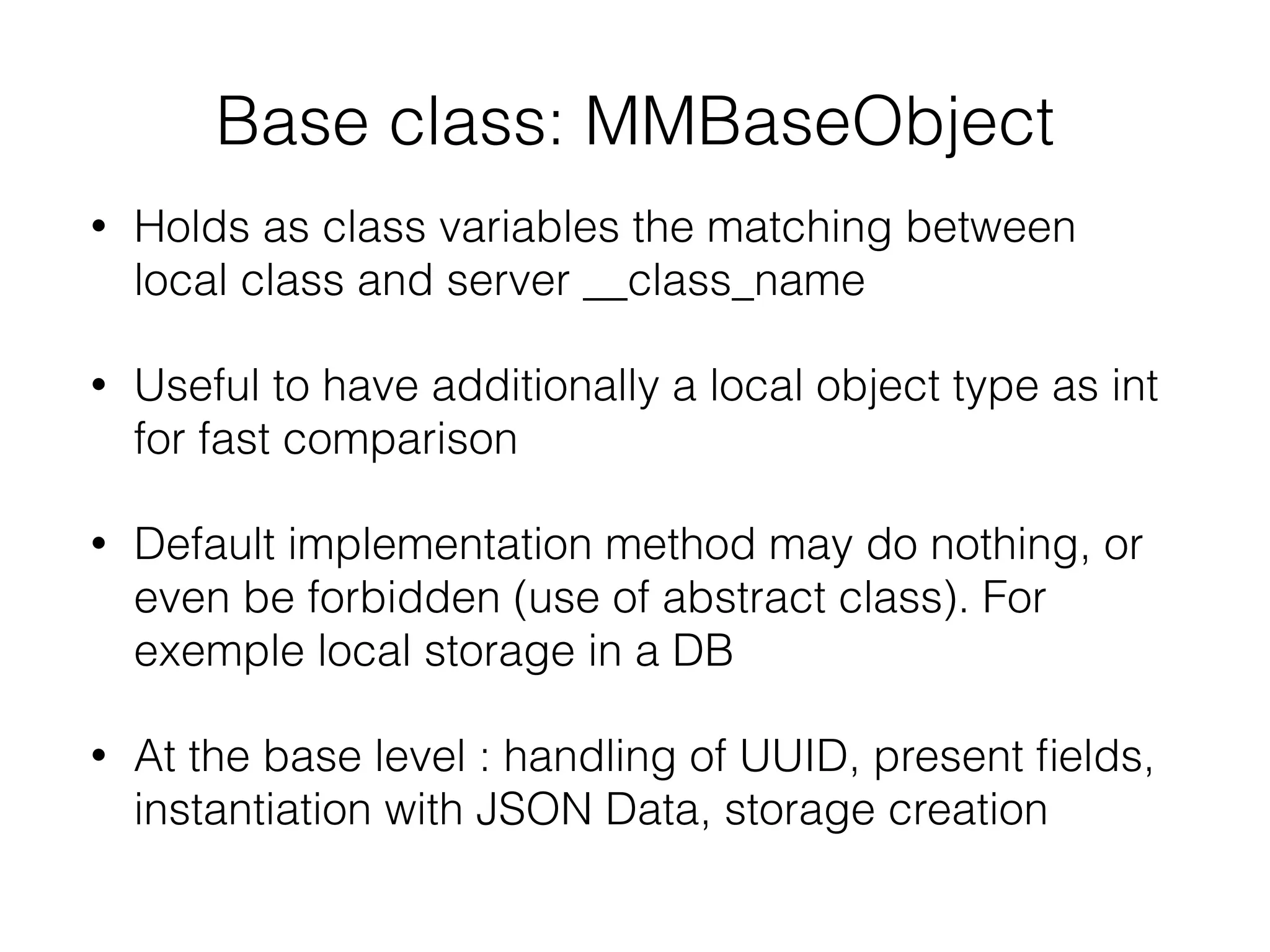
![Objective-C implementation
/* Registration of MMXXX class at load time */
+ (void)load
{
[MMBaseObject registerClass:NSStringFromClass([self
class]) forType:kMMObjectTypeUser JSONClassName:@"user"
persistentDBType:@"USER"];;
}
/* Main object instantiation entry point */
[MMBaseObject createMMObjectsFromJSONResult:tmpJSON
parsedTypes:&tmpbjectTypes context:(void *)context];
!
/* Abstract method for Storage creation */
+ (char *)persistentSQLCreateStatement;](https://image.slidesharecdn.com/backend-ios-140520180537-phpapp02/75/Elements-for-an-iOS-Backend-24-2048.jpg)
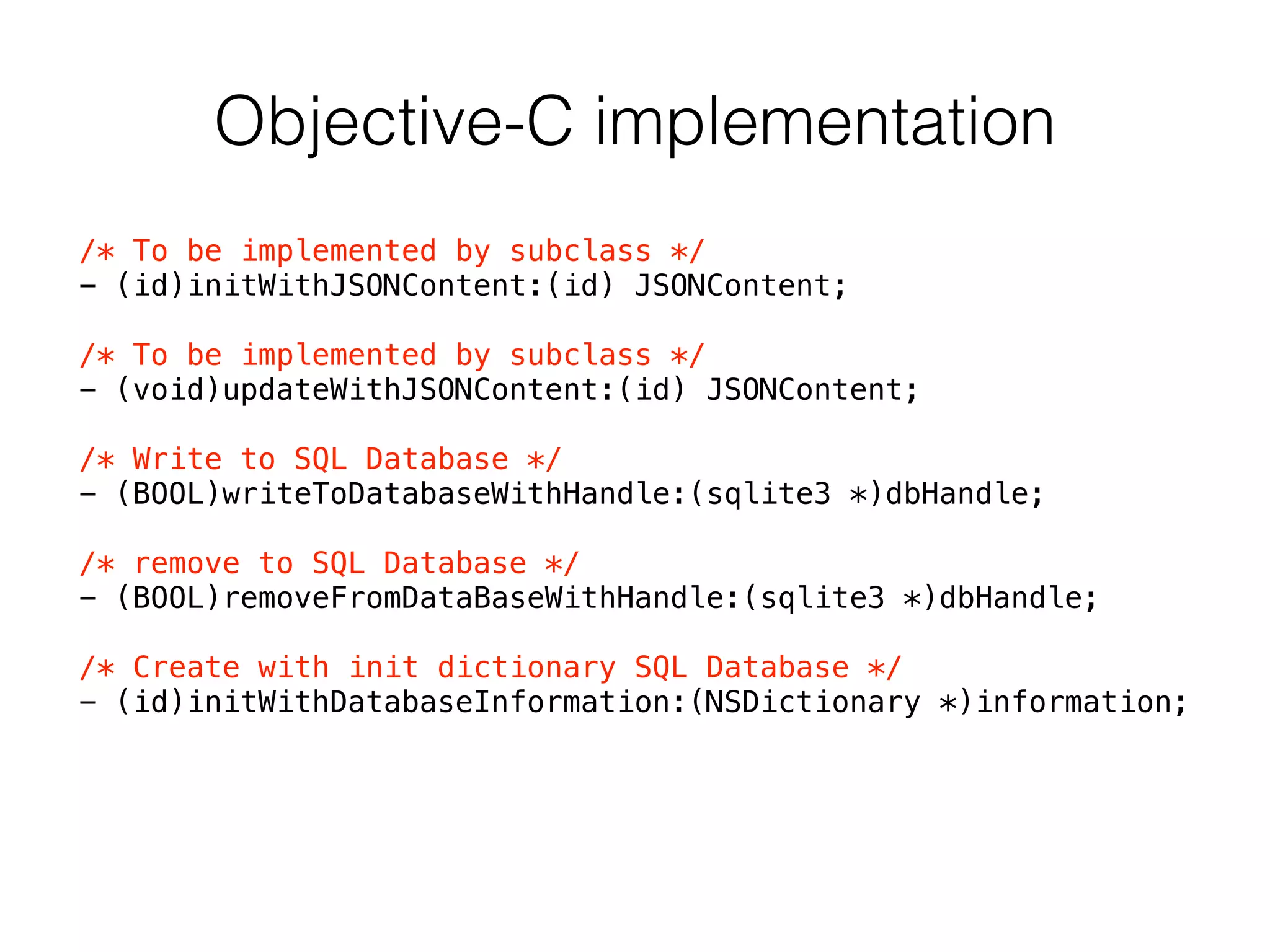
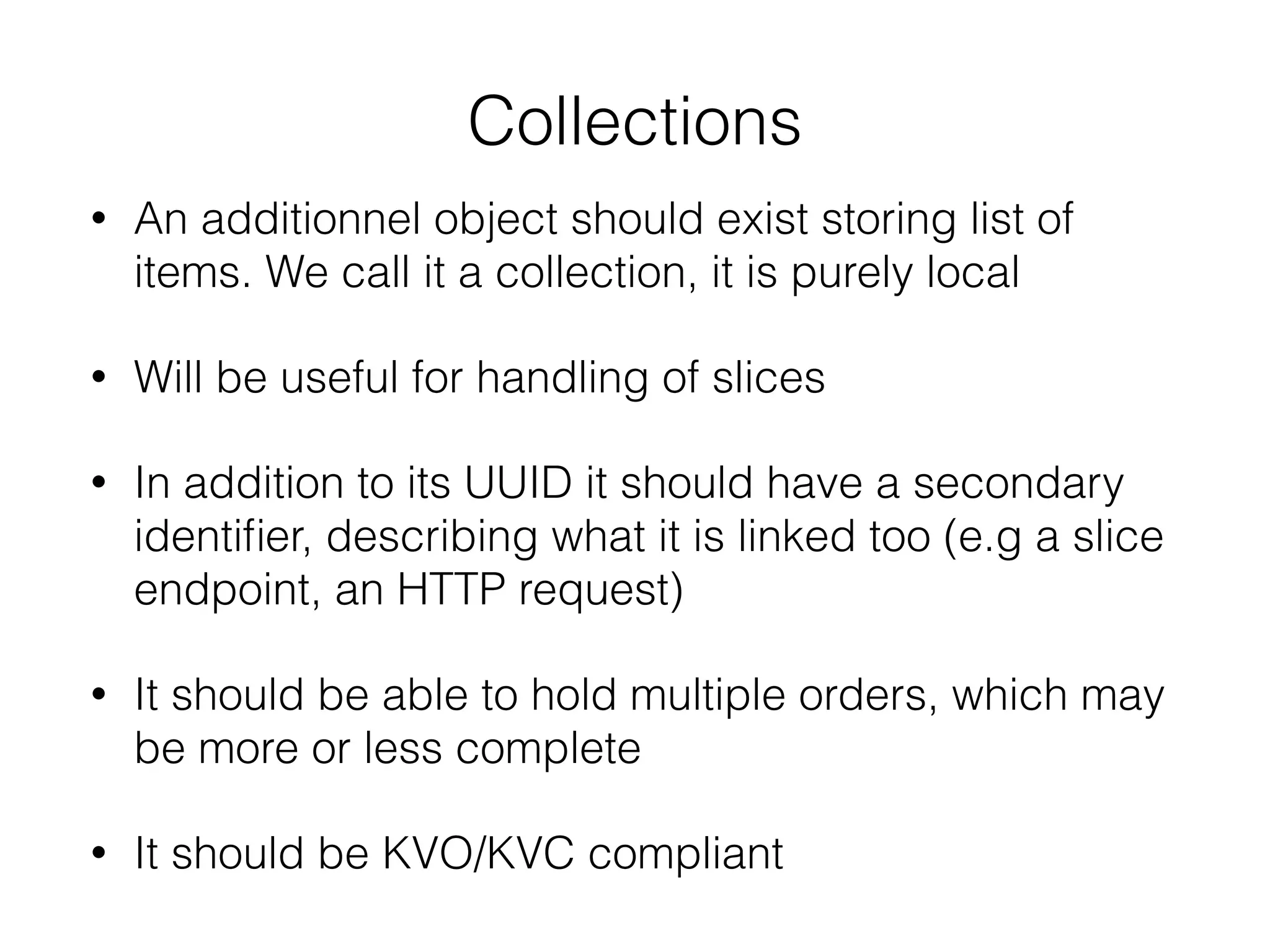
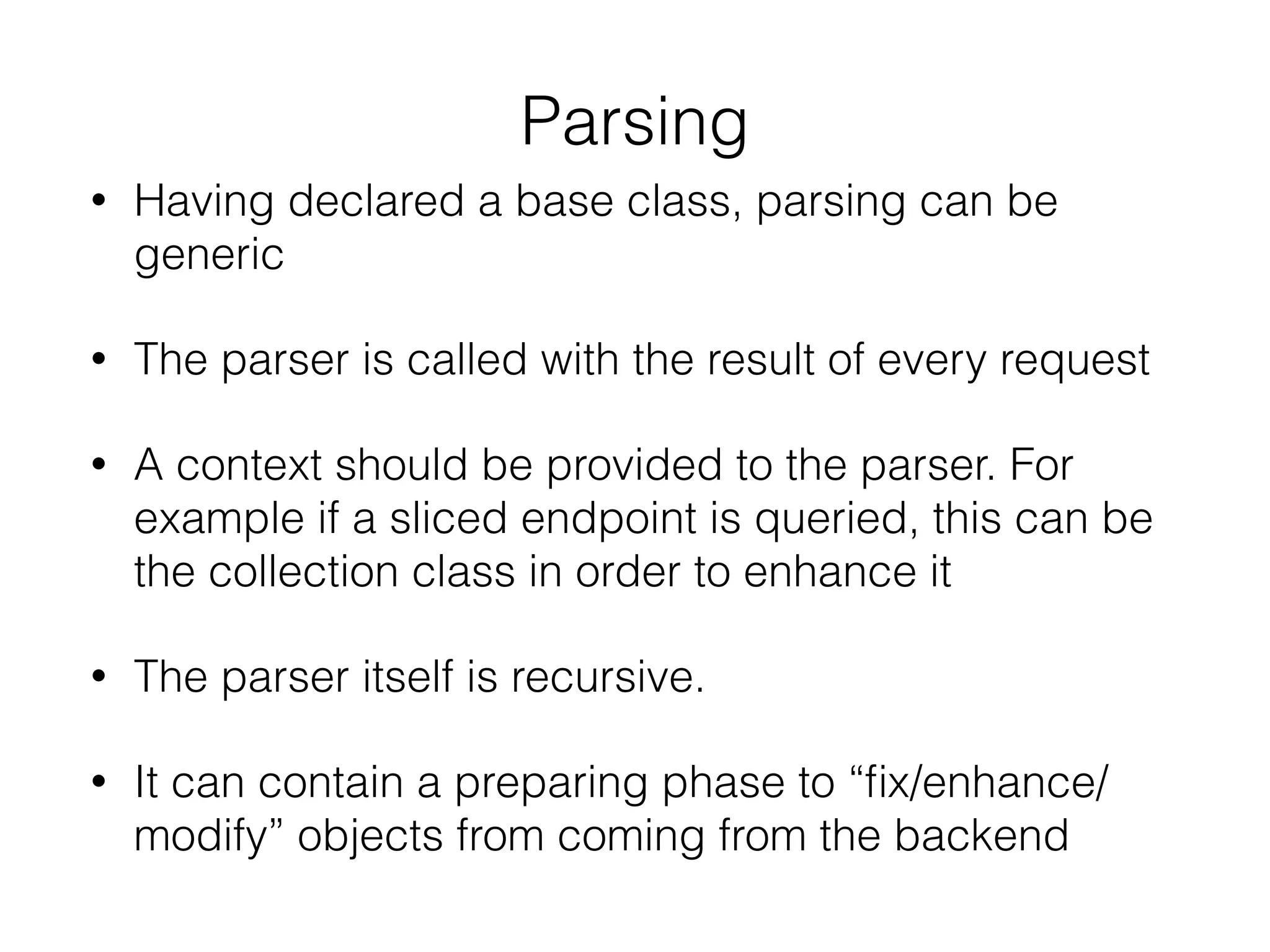

![if ([inputObj isKindOfClass:[NSArray class]]) {
[inputObj enumerateObjectsUsingBlock:^(id obj, NSUInteger idx, BOOL *stop) {
MMObjectType tmpObjectType = _ParseAPIObjectWithExecutionBlock(obj, provider, task);
result |= tmpObjectType;
}];
} else if ([inputObj isKindOfClass:[NSDictionary class]]) {
NSDictionary *tmpDictionary = (NSDictionary *)inputObj;
NSString *objectAPIType = tmpDictionary[@"__class_name"];
NSString *objectUUID = tmpDictionary[@"uuid"] ;
if (objectUUID) {
MMBaseObject *tmpObject = nil;
BOOL objectIsHere = [provider.dataStore containsObjectWithUUID:objectUUID];
if (objectIsHere) {
tmpObject = [provider.dataStore objectWithUUID :objectUUID];
[tmpObject updateWithJSONContent:tmpDictionary];
result |= tmpObject.type;
} else {
if (!objectAPIType) return result;
tmpObject = nil;
NSString *objectClass = [MMBaseObject classNameForStringAPIType:objectAPIType];
if (!objectClass) return result;
tmpObject = [[NSClassFromString(objectClass) alloc] initWithJSONContent:tmpDictionary];
result |= tmpObject.type;
[provider.dataStore addObject:tmpObject replace:NO];
}
[tmpDictionary enumerateKeysAndObjectsUsingBlock:^(id key, id obj, BOOL *stop) {
if([obj isKindOfClass:[NSArray class]] || [obj isKindOfClass:[NSDictionary class]]) {
MMObjectType tmpObjectType = _ParseAPIObjectWithExecutionBlock(obj,provider, task);
result |= tmpObjectType;
}
}];
} else { //this is a slice
if (tmpDictionary[@"data"] && tmpDictionary[@"limit"] && tmpDictionary[@"offset"]){
_ParseAPIObjectWithExecutionBlock(tmpDictionary[@"data"],provider, task);
}
}
}
return result;](https://image.slidesharecdn.com/backend-ios-140520180537-phpapp02/75/Elements-for-an-iOS-Backend-29-2048.jpg)
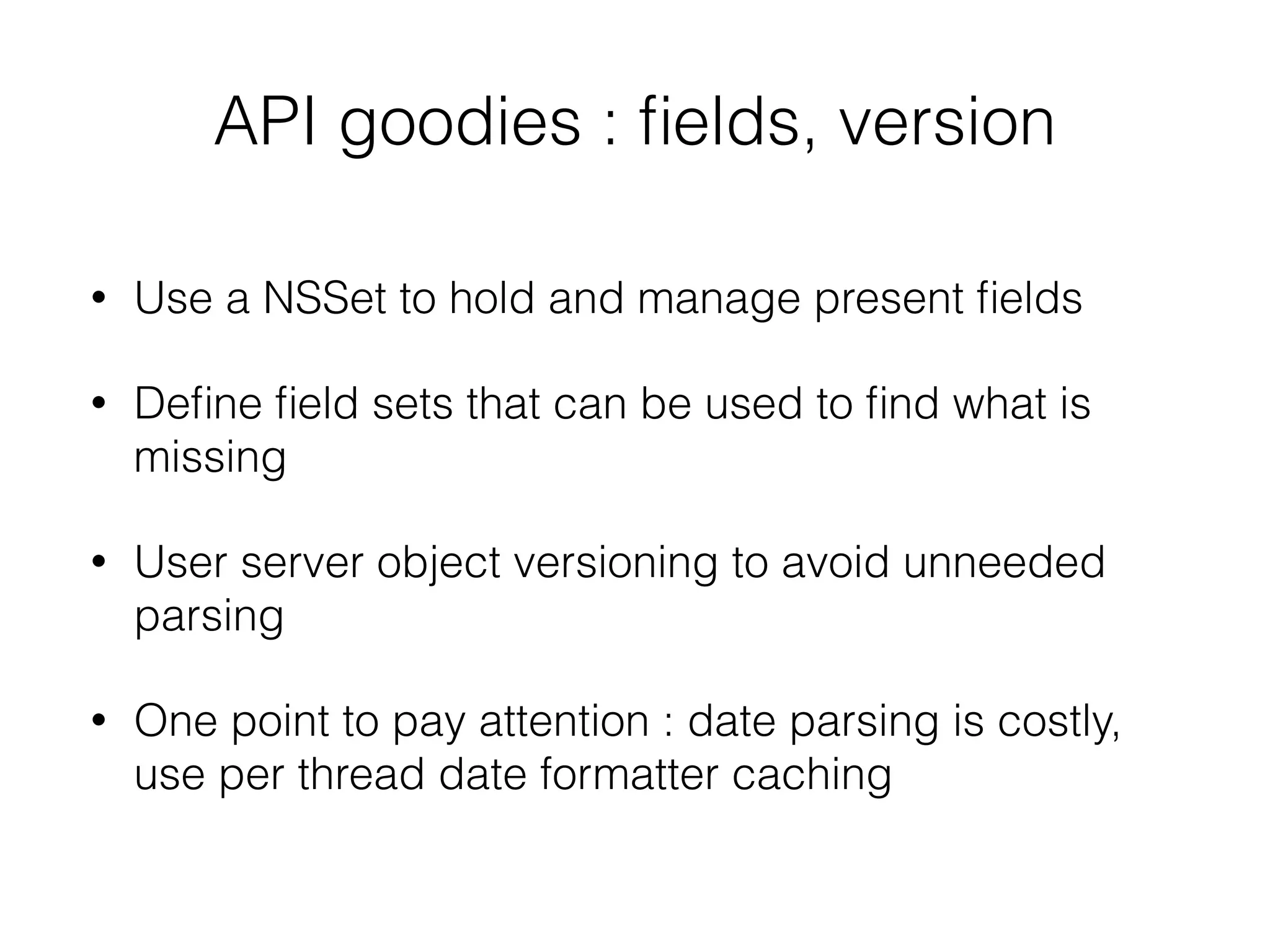

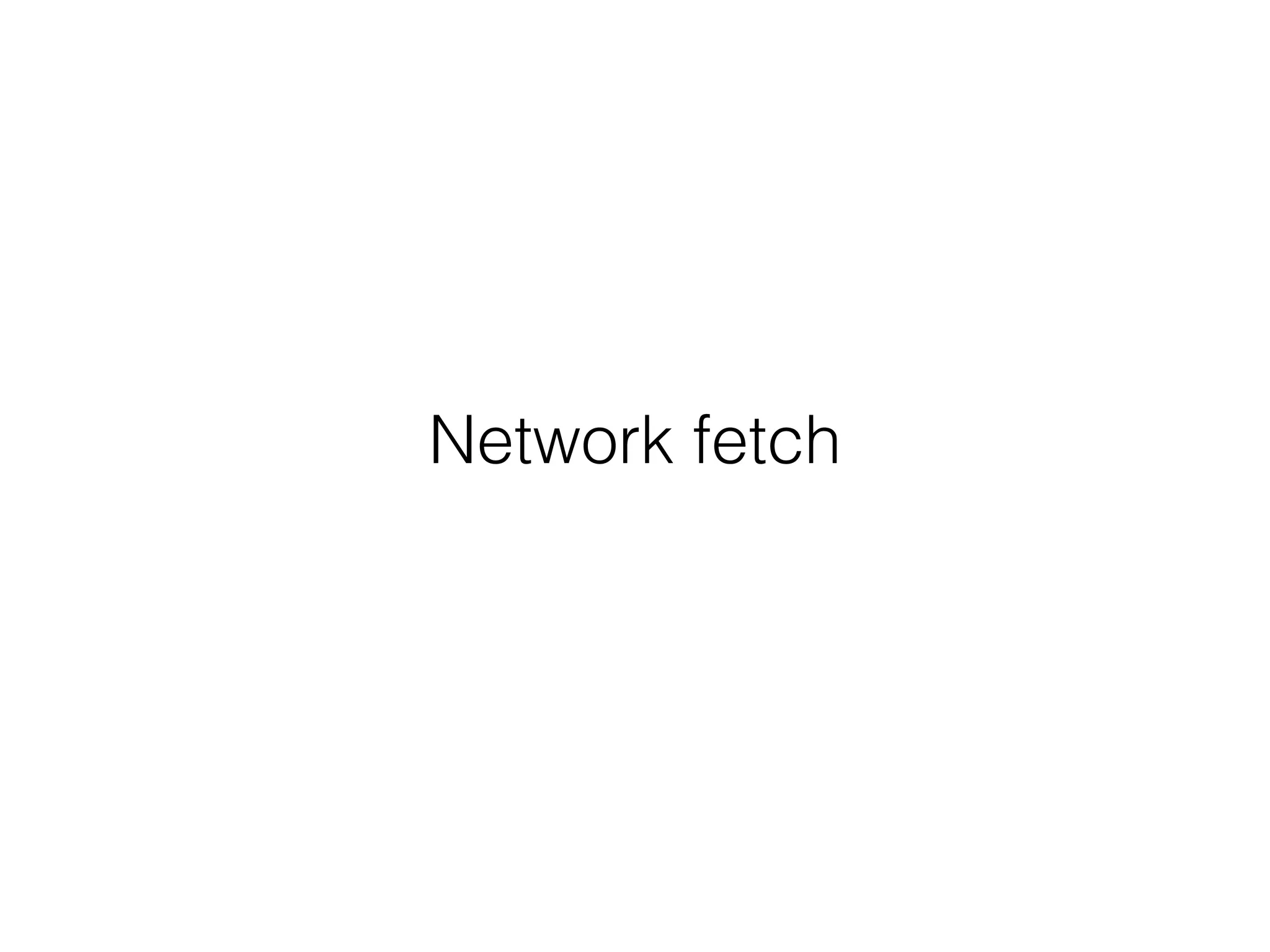
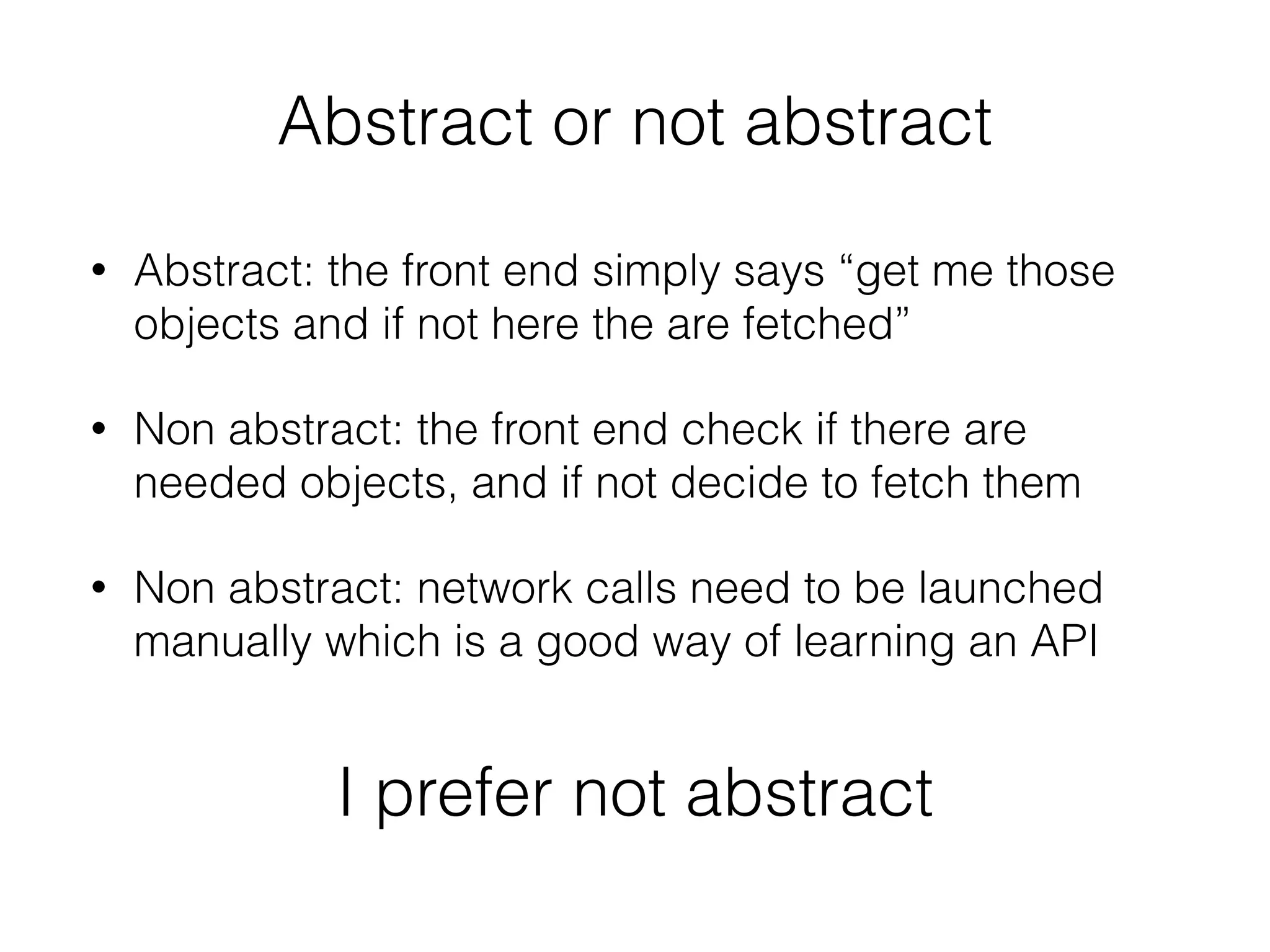
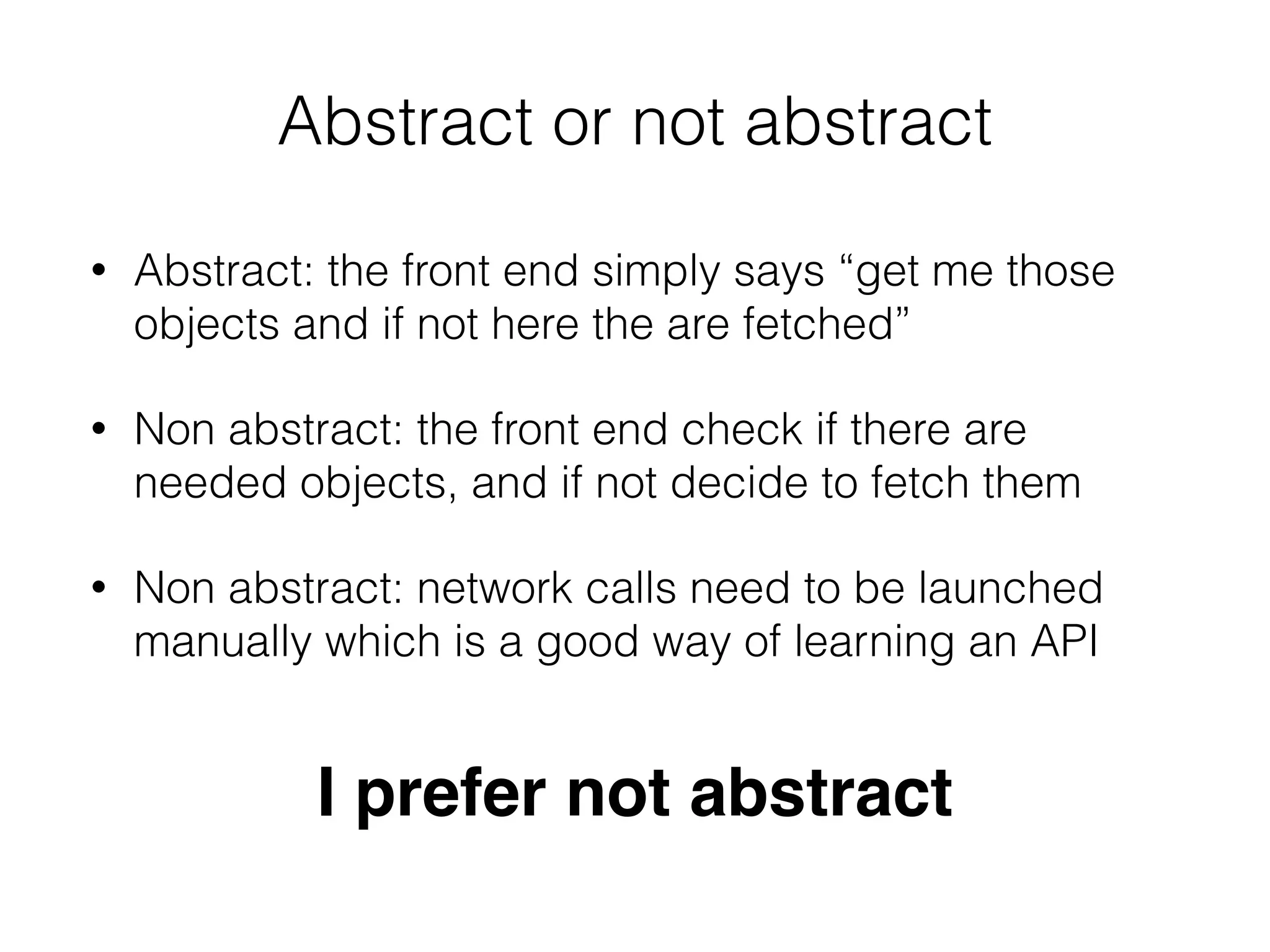
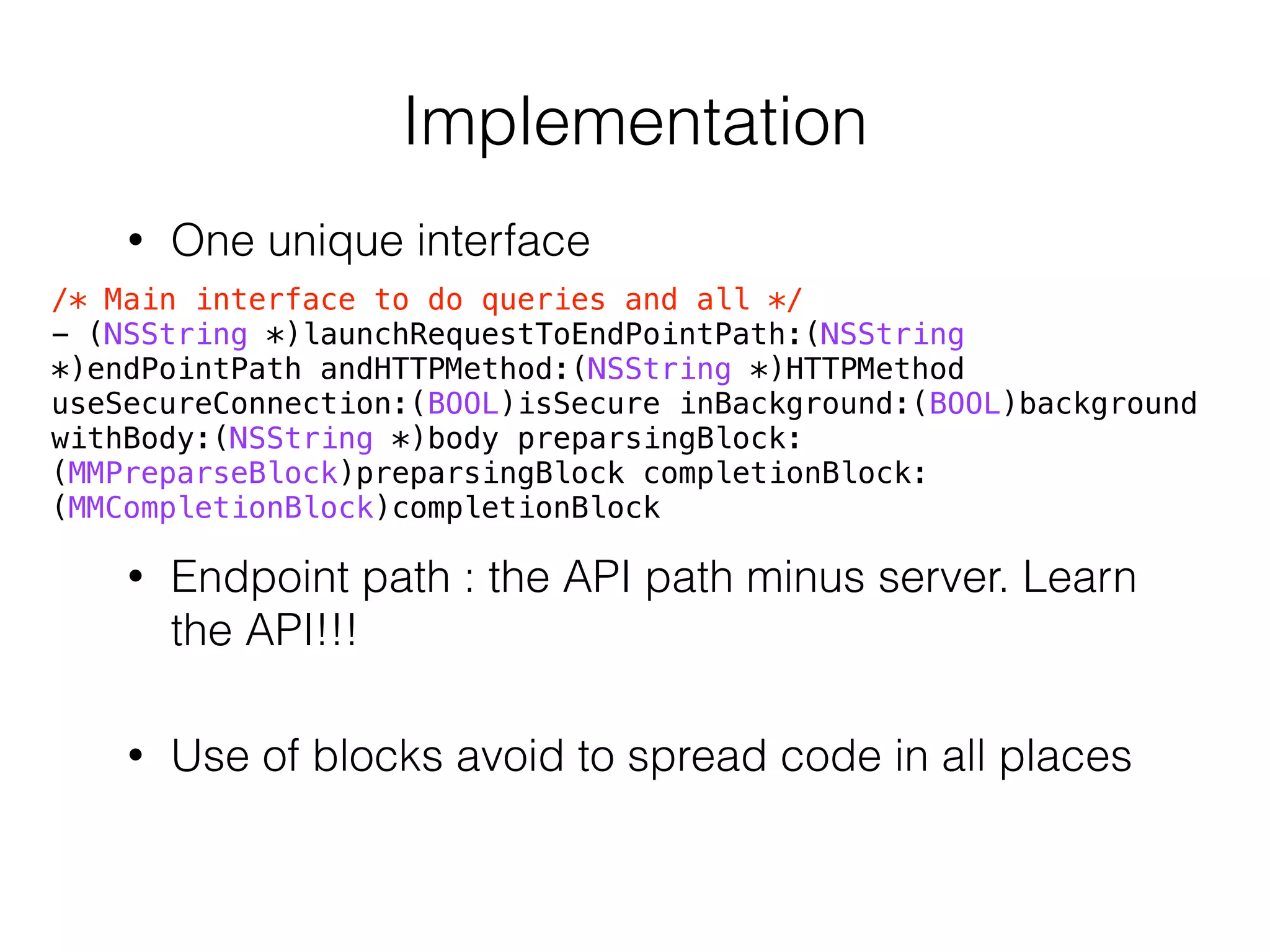

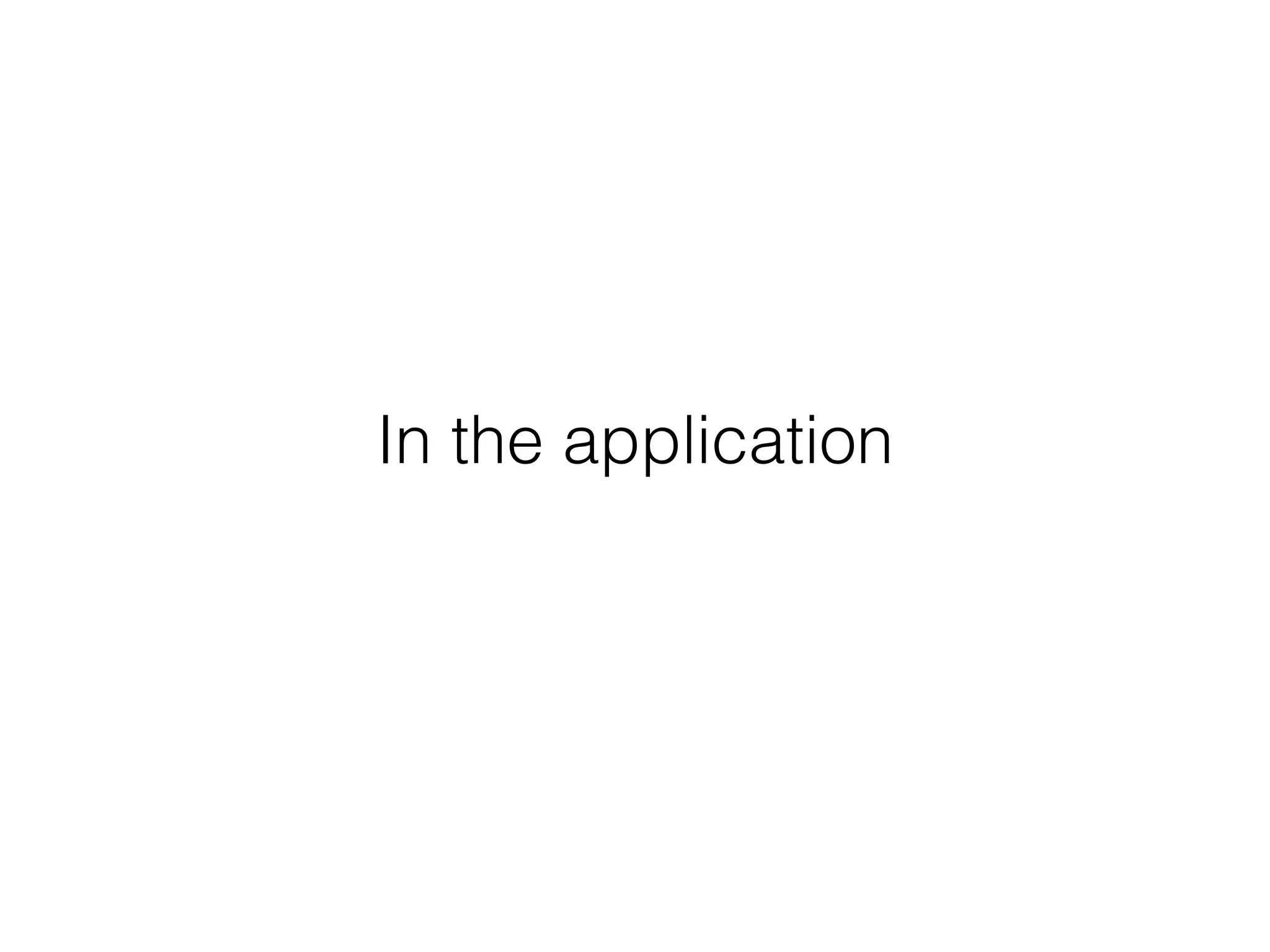


![Upgrade management
/* Use the Objective-C runtime */
- (BOOL) runUpgradeScenario
{
#pragma clang diagnostic push
#pragma clang diagnostic ignored "-Warc-performSelector-leaks"
__block BOOL result = NO;
!
if(NO == self.firstTimeForCurrentVersion && NO == self.firstTime)
return result;
!
!
}
NSMutableDictionary *allUpgrades= [NSMutableDictionary dictionary];
NSMutableDictionary *allStarts= [NSMutableDictionary dictionary];
//Find all upgrade methods
unsigned int outCount;
Method * allMethods = class_copyMethodList([self class], &outCount);
for(unsigned int idx = 0; idx < outCount; idx++) {
Method aMethod = allMethods[idx];
NSString *aMethodName = NSStringFromSelector(method_getName(aMethod));
if([aMethodName hasPrefix:@"_upgradeFrom"]) {
NSString *upgradeVersionString = [aMethodName substringWithRange:NSMakeRange([@"_upgradeFrom" length], 3)];
[allUpgrades setObject:aMethodName forKey:upgradeVersionString];
} else if ([aMethodName hasPrefix:@"_startAt"]) {
NSString *startVersionString = [aMethodName substringWithRange:NSMakeRange([@"_startAt" length], 3)];
[allStarts setObject:aMethodName forKey:startVersionString];
}
}
if(allMethods) free(allMethods);
if(self.firstTime) {
//sort them and perform the most "recent" one
SEL startSelector = NSSelectorFromString([allStarts[[[allStarts keysSortedByValueUsingSelector:@selector(compare:)]lastObject]]]);
[self performSelector:startSelector withObject:nil];
result = YES;
} else if(self.firstTimeForCurrentVersion) {
//Sort them and apply the one that needs to be applied
[[allUpgrades keysSortedByValueUsingSelector:@selector(compare:)] enumerateObjectsUsingBlock:^(NSString *obj, NSUInteger idx, BOOL
*stop) {
if([obj intValue] > _previous3DigitVersion) {
result = YES;
[self performSelector:NSSelectorFromString([allUpgrades objectForKey:obj]) withObject:nil];
}
}];
}
#pragma clang diagnostic pop
return result;](https://image.slidesharecdn.com/backend-ios-140520180537-phpapp02/75/Elements-for-an-iOS-Backend-40-2048.jpg)
